Content marketing is one of the best ways to grow your business online organically, regardless of your niche.
However, for SaaS companies, content marketing is even more valuable than some other businesses, especially B2C.
In this article, we will be taking a look at:
- How is SaaS content marketing different from regular content marketing
- What makes it such an important aspect of the SaaS marketing mix
- How to build up your content strategy
- How to produce content for each stage of your marketing funnel
- And much more
Without any additional delay, let’s start by answering the big question.
- How is SaaS Content Marketing Different?
- Why is Content Marketing So Important For SaaS?
- Is Content Marketing Right for You?
- Build Up Your Content Strategy
- Establish Thought Leadership In Your Niche
- Branch Out Your Core Topics
- Create Content For Each Funnel Stage
- Use All Distribution Channels
- Promote Content
- Update, Syndicate, Republish
- Now Over To You
- FAQ
Link building cheat sheet
How is SaaS Content Marketing Different?
Content marketing isn’t about selling; it’s about building trust and relationships.
It’s about creating and sharing valuable content that will help your target audience solve their problems and make their lives better.
If you can do that, you’ll be well on your way to driving profitable customer action.
Here are the five most notable differences between regular content marketing and that for SaaS.
- SaaS target audiences are usually much more clearly defined and tech-savvy
- Because of the audience, the content is also usually more centered around completing a very particular task, usually with the help of your software
- This affects the tone of the content too, making it much more technical and packed with information as opposed to the more light-hearted and entertaining tone of more “regular” content marketing
- The end goal of a SaaS content marketing strategy is to generate and convert leads, while more generalized content marketing’s job is to generate organic traffic and awareness
- General content marketing may take advantage of offline content distribution channels such as magazines and newspapers, while for SaaS content marketing, that is extremely rare
Why is Content Marketing So Important For SaaS?
Besides the obvious benefit of generating traffic to your website and generating leads, content marketing has four very distinct benefits that make it a go-to strategy for any SaaS business.
More Sustainable Than Outbound Sales
It is not a secret that cold outreach is becoming more and more inefficient.
In fact, for optimal results, sales reps need to do 60 sales calls every day on average.
The typical B2B salesperson achieves half as much, meaning their chances of a successful call are halved.
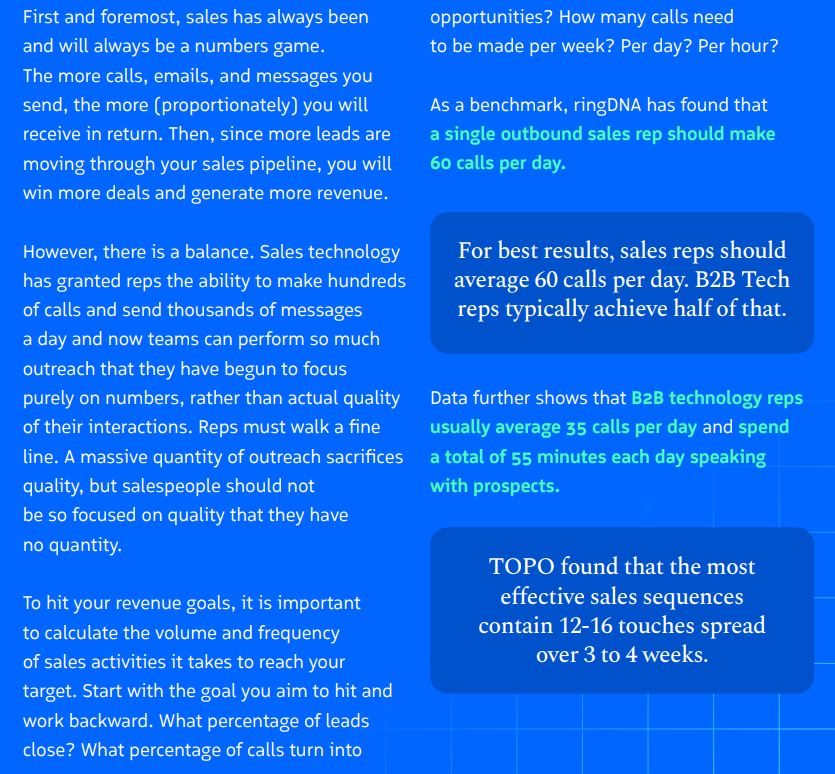
In order for outbound sales to be feasible for a SaaS business, your CAC to LTV ratio should be around 3.
According to Aaron Ross in his “Predictable Revenue” book, the threshold to doing outbound sales is when your LTV is $10K, which is not a number many SaaS businesses can boast.
This means, if your pricing is on the more affordable side, you will be paying your sales reps more than they will be getting you in sales.
On the other hand, generating organic traffic is cheaper – even with all of the content production and publication costs.
Just take a look at Visme – Ahrefs estimates their monthly organic traffic to be worth $1.7M – all generated through content marketing.

Builds Authority
Most content on a SaaS website is dedicated to your software’s primary use case.
For example, Respona’s primary purpose is to help streamline link building outreach for SEOs and bloggers.
As you may have noticed, the bulk of our blog content revolves around link building along with touching topics, which are SEO, email outreach, and, of course, content marketing.
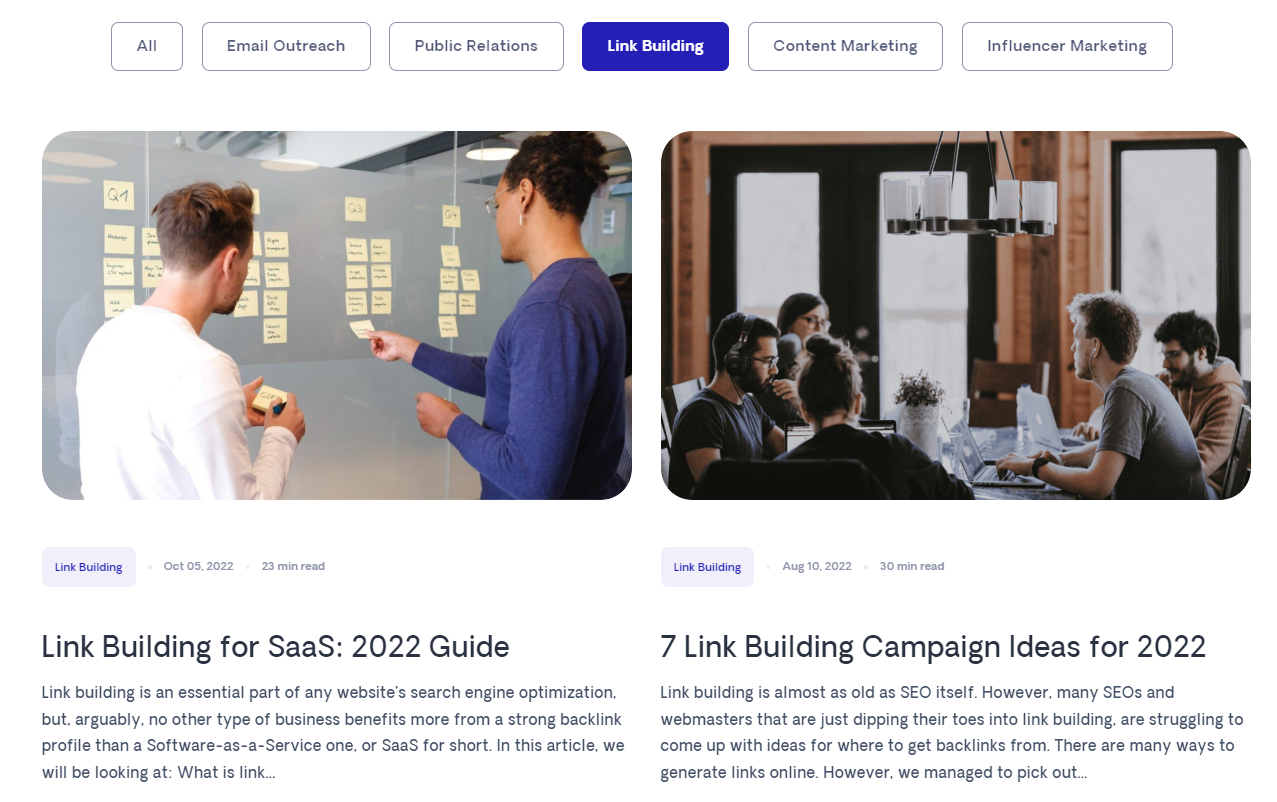
This alignment helps establish yourself as an authority in your field – after all, if you went through all of the effort to build an entire piece of software to help with a specific pain point, you probably know a thing or two about it.
And being recognized as knowledgeable about a certain topic leads to increased brand recognition, lead generation, and, of course, better engagement with your audience, which leads us to the next section.
Connects With Your Audience
Your audience needs help – you offer them a solution.
Solving real pain points brings you closer to your audience, increasing engagement as well as the likelihood of conversions.
SaaS content marketing helps you increase engagement with your audience by educating them with thorough, high quality content that helps them resolve a very specific pain point.
Attracts Backlinks
Backlinks remain one of the most impactful ranking factors, even all these years later, after countless Google algorithm updates aimed to remove link spam.
And indeed, the updates helped remove straight-up spam (PBN links, reciprocal exchanges, paid links on low-quality websites, etc.).
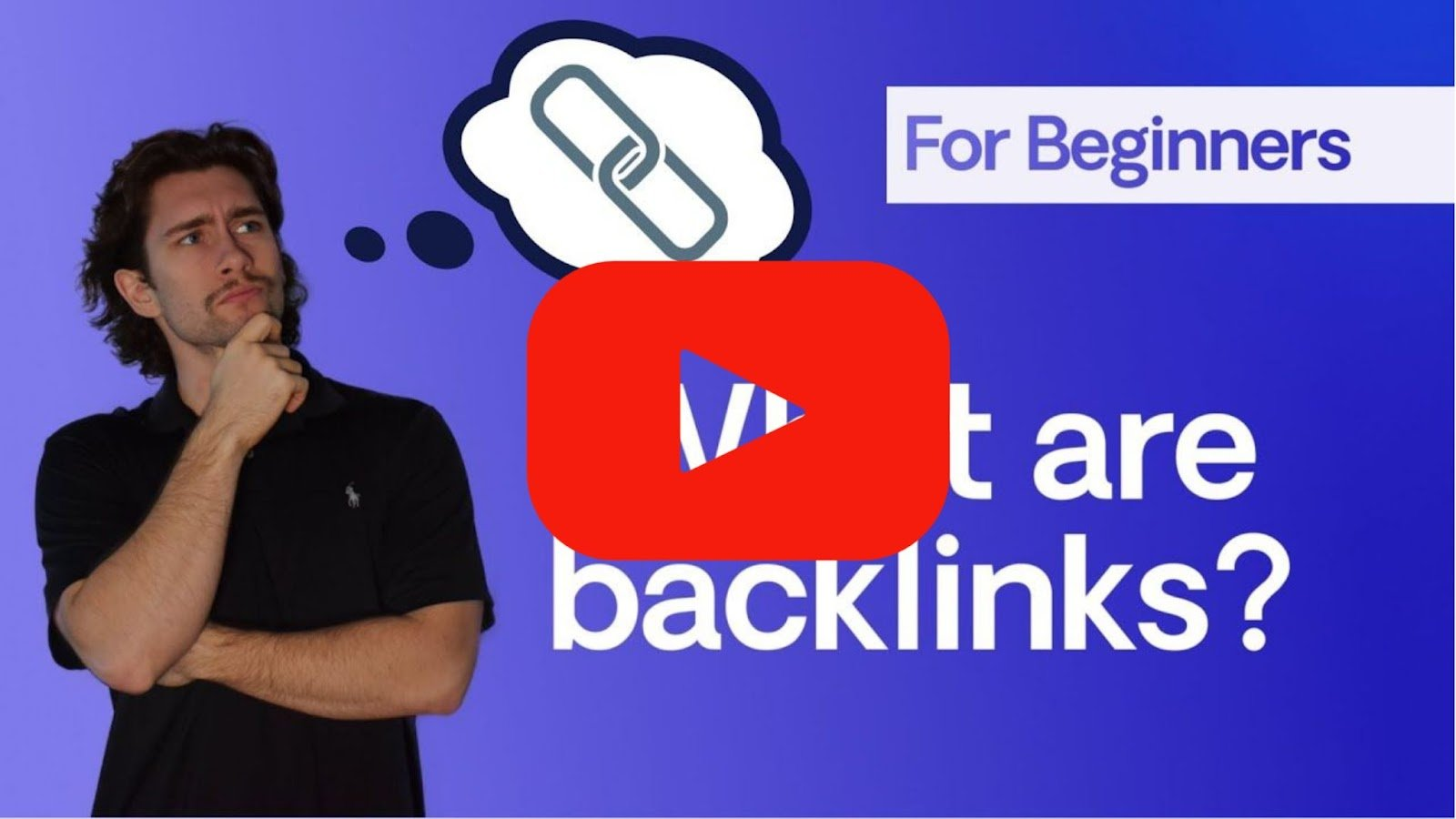
However, they have only solidified the importance of editorial backlinks from relevant, authoritative resources.
And one of the best ways to earn these backlinks is, of course, by publishing quality content on your website, also commonly referred to as “linkable assets”.
A linkable asset may take many forms:
- Blog posts
- Infographics
- Surveys
- Statistics
- Case studies
- Industry research
A well-rounded SaaS content marketing strategy takes advantage of all these types of content.
So, how do you actually get started?
Let’s take a look at each of the steps in more detail.
Is Content Marketing Right for You?
Before jumping into content marketing, you need to ask yourself the following set of questions to better understand whether content marketing actually makes sense for your SaaS business.
- Who are you trying to reach with your content marketing?
- What do you hope to achieve through content marketing?
- How much are you willing to invest in content marketing?
- Do you have the internal resources to create and maintain a content marketing strategy?
If you’re still not sure whether content marketing is right for you, take a look at what your competitors are doing, or run a small pilot project to test the waters a little bit.
Just keep in mind that content marketing may take a while to start showing results and don’t get discouraged if your first few posts don’t generate any traffic on their own.
This will help you to assess whether content marketing is likely to be successful for your business before committing to a larger-scale strategy.
Build Up Your Content Strategy
There are several prerequisites you will need before you can actually delve into content marketing.
Optimized Website
An optimized website is essential for saas content marketing because it helps you rank higher in search engine results, reach more potential customers, and convert more leads into paying customers.
A well-optimized website also makes it easier for potential customers to find and use your software, which can help increase customer satisfaction and loyalty.
If your users can’t find your website, even the most amazing of content will be useless.
The same applies to a slow-loading website, one with a confusing design, or one that can’t be properly crawled by search engines.
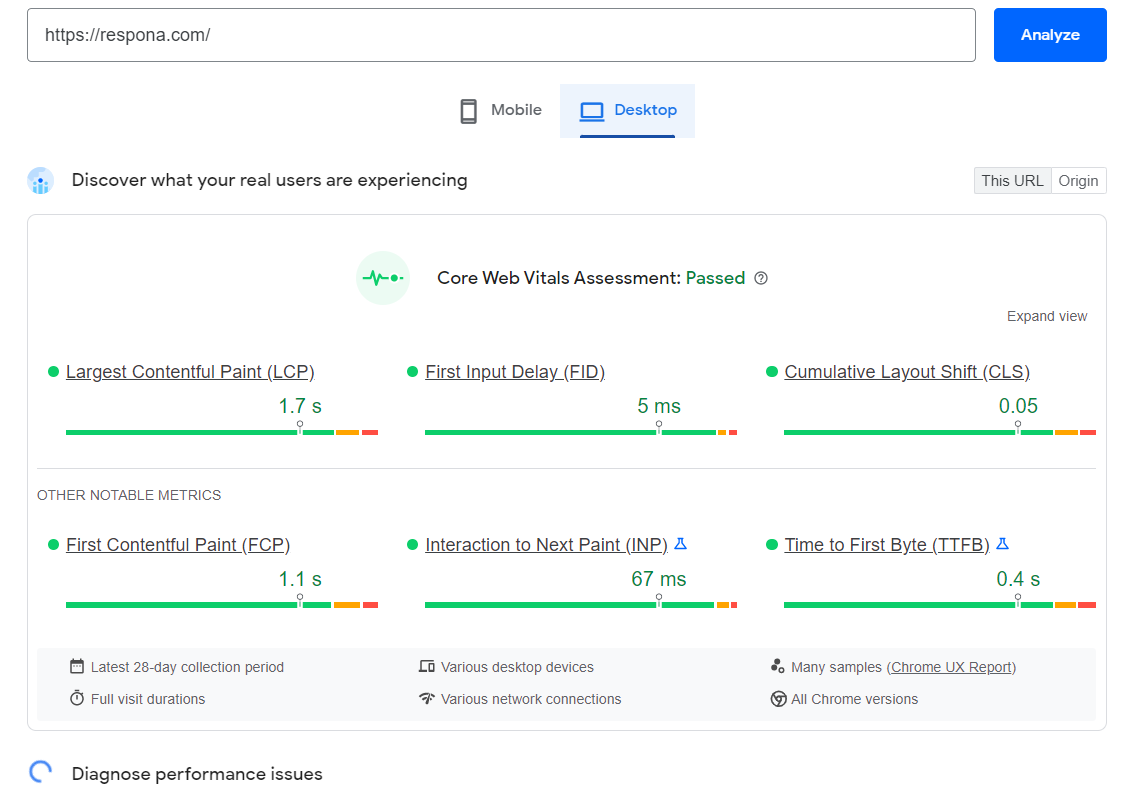
There are three sides to proper search engine optimization: on-page SEO, off-page SEO, and technical SEO.
You can learn more about each type of SEO and the exact strategies to employ in our guide on how to develop a successful SEO strategy.
Dedicated Content Team
If you don’t already have a content team in place that’s responsible for researching, producing, and maintaining high-quality content, you need to start hiring right now, if you’re planning to get serious about SaaS content marketing.
Of course, you can become your own content marketer, but unless you already have serious experience with content creation and promotion, it’s going to be wildly inefficient.
The perfect team involves at least six B2B marketers:
- A content strategist to develop a content strategy that aligns with the overall digital marketing and business goals
- A content writer to produce high-quality, engaging content that educates, informs and entertains the target audience
- A content editor to ensure all content meets the required standards of quality and style
- A content manager to oversee the content marketing process, from strategy to execution
- A social media manager to develop and implement a social media strategy that promotes and amplifies the reach of the content
- An analyst to track the engagement and performance of the content and provide insights to inform future strategy
This might seem like a lot of people for a small SaaS company.
It is, so it’s not uncommon for a single person to take several of these roles.
However, if your budget allows you, don’t hesitate to hire a full content team as it will drastically affect the quality of the content you’re able to put out, as well as the speed at which you can do so.
Tech Stack
Besides the obvious Google Docs or Microsoft Word, a content team needs three other types of software:
- Keyword research tool(s)
- Content optimization tool(s)
- SaaS SEO tracking software
Let’s take a look at an example of each of these types of tools.
Ahrefs
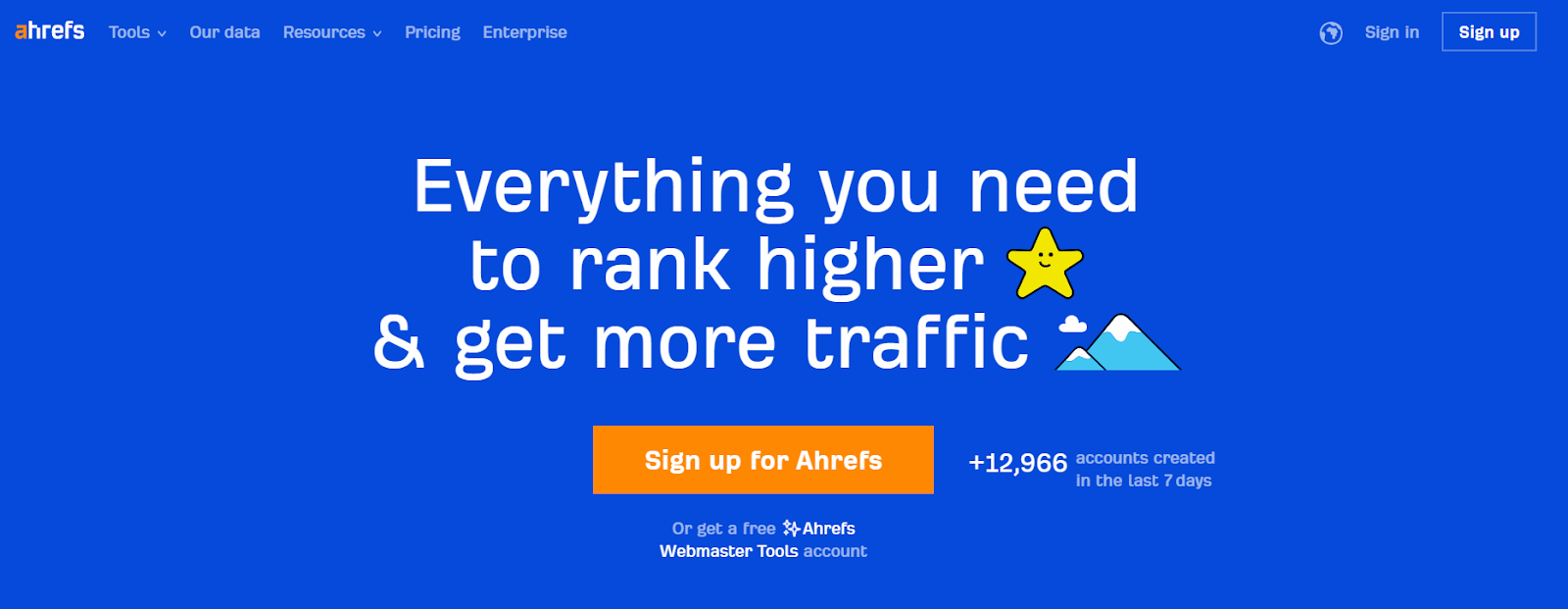
Ahrefs is a very well-known backlink monitoring software, but it can also fill dozens of other purposes, including keyword research and SEO monitoring.
We also use it for link building prospecting and pitching guest posts by analyzing their keyword gaps.
We will look more in-depth into how to research keywords with Ahrefs further down in the article.
Pricing: starts at $99/month.
MarketMuse
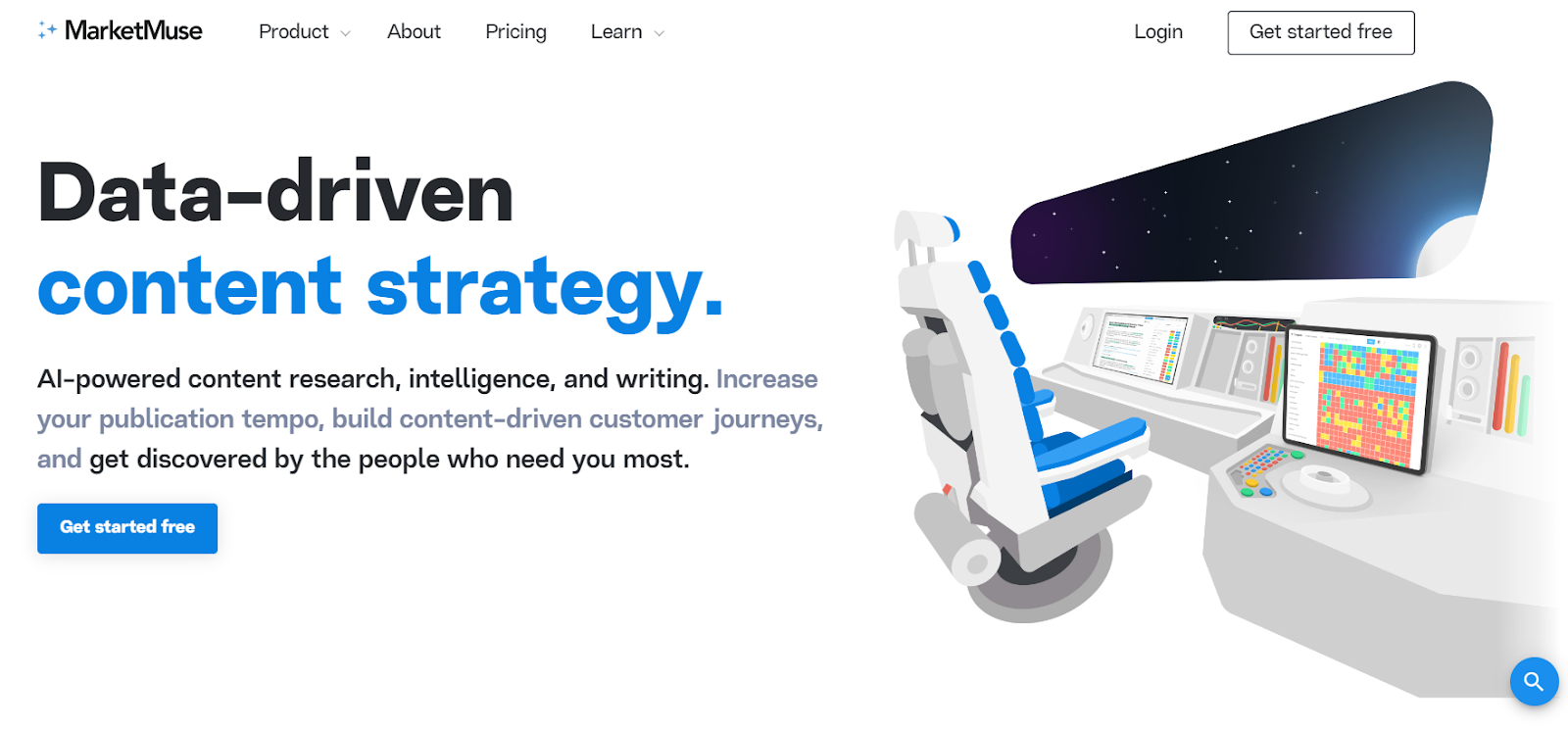
MarketMuse is a keyword optimization tool for your content. There are many other alternatives to it such as SurferSEO, but we’re recommending MarketMuse simply because we’re using it in-house.
Once you paste in your article along with your target keyword, the tool will scan the top results currently ranking for the same keyword and suggest exactly which relevant keywords and how many times need to be mentioned in your article to achieve similar results.
Of course, a perfect MarketMuse score doesn’t guarantee #1 rankings on its own – it’s just a pointer to help you form your content in the right direction.
Pricing: freemium, paid plan starts at $7200/year
Google Analytics
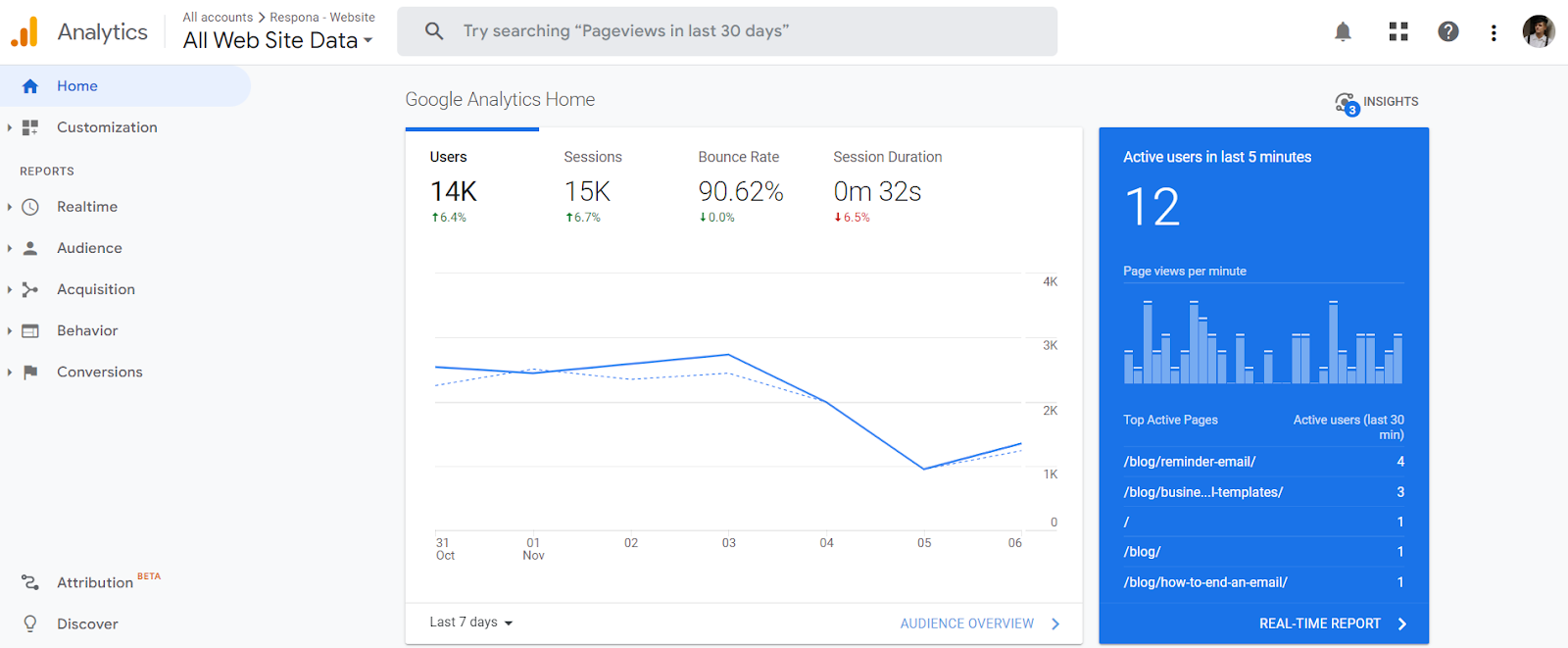
Google Analytics’ purpose is to give you a detailed, page-by-page breakdown of your website’s traffic.
It’s a must-have tool in the tech stack of any website owner and is especially useful for measuring the success of your SaaS marketing campaigns, finding top-performing content and capitalizing on it, as well, as finding areas for improvement.
The best thing about it is that it’s absolutely free.
Set Goals
The first step is to come up with some broad goals for your content marketing campaign. These could be something like:
- Increase brand awareness
- Generate more leads
- Convert more leads into paying customers
- Increase customer retention
Once you have your broad goals, you need to get more specific and come up with something that is specific, measurable, achievable, relevant, and time-bound.
In other words, SMART.
Some examples of SMART goals can be:
- Get 100 social media shares in the first month
- Generate 10 leads each week for a month
- Achieve a 2% conversion rate
Establish KPIs
KPI stands for a key performance indicator. They are the SaaS content marketing metrics you will be using to track your performance.
A few examples of KPIs that could be used to track the success of a SaaS content marketing campaign are:
- Leads generated
- Conversion rate
- Blog posts published
- Social media shares
- Organic traffic
- New/lost newsletter subscribers
KPIs can provide you with actionable insights about what’s working for you and what isn’t.
For example, if the number of new leads or customers acquired is increasing, it indicates that the campaign is successfully driving awareness and interest.
Similarly, if the number of social media shares is increasing, your team is creating engaging and shareable content.
However, tracking every KPI you can think of is going to provide you with a load of useless data as well.
Which is why you only need to track KPIs that actually align with your SMART goals.
Audit Existing Content
Before you jump into creating completely new content, if you already have some existing pieces published on your blog, it’s worth revisiting them with an audit.
After all, it’s much easier to review and edit a blog post than to write a completely new one from scratch.
This includes blog posts, articles, landing pages, and any other pieces of content that are on your site.
Once you have a complete list of all your content, you can then start to assess which pieces are performing well and which ones are not.
To do this, you can look at things like pageviews, time on page, bounce rate, and backlinks. You can also look at engagement metrics, such as social shares and comments.

Besides raw performance, take note of whether or not this content caters to your buyer persona and targets a keyword that makes sense for your business.
We will be looking at how to conduct audience and keyword research in the two sections below.
Audience Research
The act of examining and evaluating a target audience in order to better understand their wants and preferences is known as audience research.
While researching your audience, you may uncover four main types of data:
- Demographics (age, gender, locality, etc)
- Psychographics (lifestyle, personality, values, etc)
- Behavioral information (purchase history, web browsing history, etc.)
- Attitudinal information (opinions, perceptions, attitudes, etc.)
A common practice is to create a “user persona”, or an avatar of sorts that represents your ideal target customer and combines all of these types of data.
You can create one by taking your actual top three customers and combining them into one person, or by conducting more thorough audience research using tools like SparkToro.
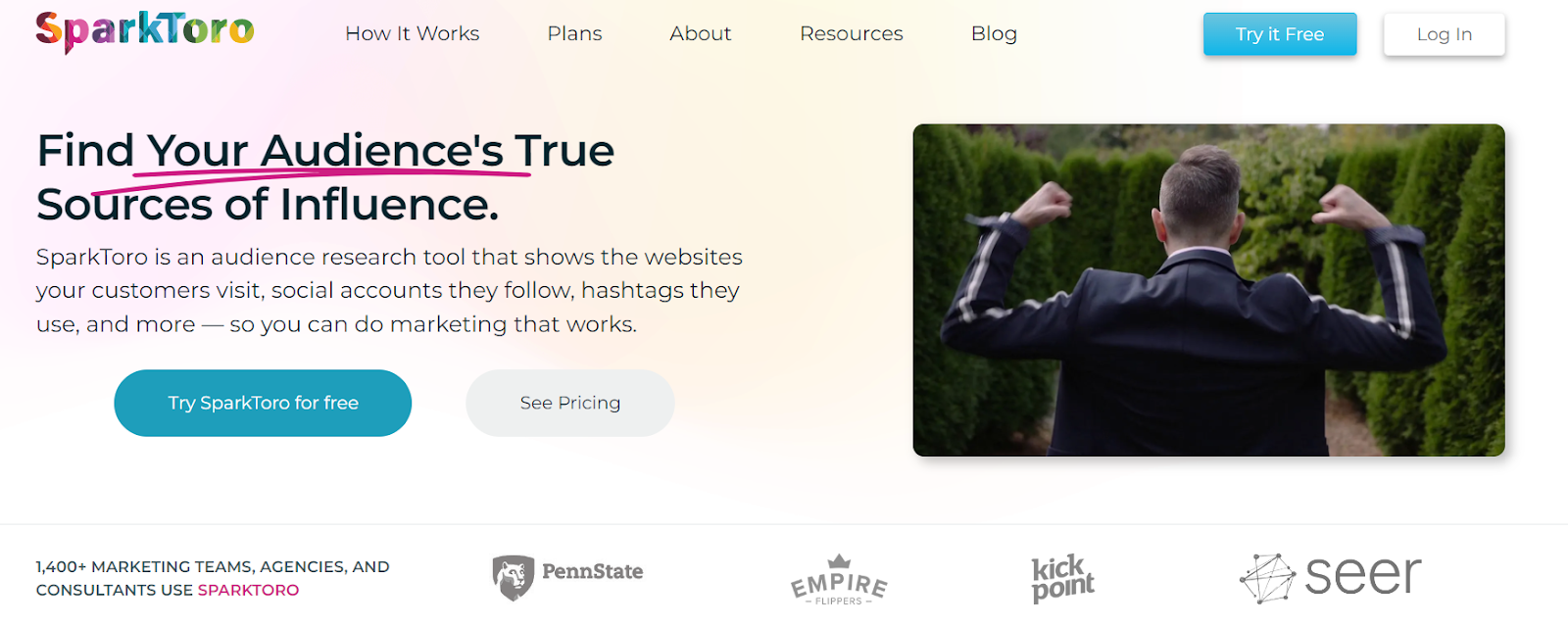
It greatly simplifies the process of obtaining such data about a particular audience – just type in your keyword or topic, and SparkToro will pull a treasure trove of demographics, psychographics, behavioral and attitudinal data in just a few seconds.
This process helps better understand what kind of content is more likely to resonate with your audience.
Keyword Research
To make content that is found online, you need to know the keywords that your audience is actually searching for.
Failing to identify these will lead to your content never being discovered online.
There are many keyword research tools available, but Ahrefs and SEMRush are two of the most popular.
We utilize Ahrefs, thus we’ll be discussing its Keyword Explorer here.
It provides overviews of specific keywords, as well as suggestions for other relevant keyphrases to target.
Simply sign in to your Ahrefs account, navigate to the Term Explorer tab, and enter your parent keyword.
Parent keywords are the main keywords of your niche. For us, one of these is “link building”.
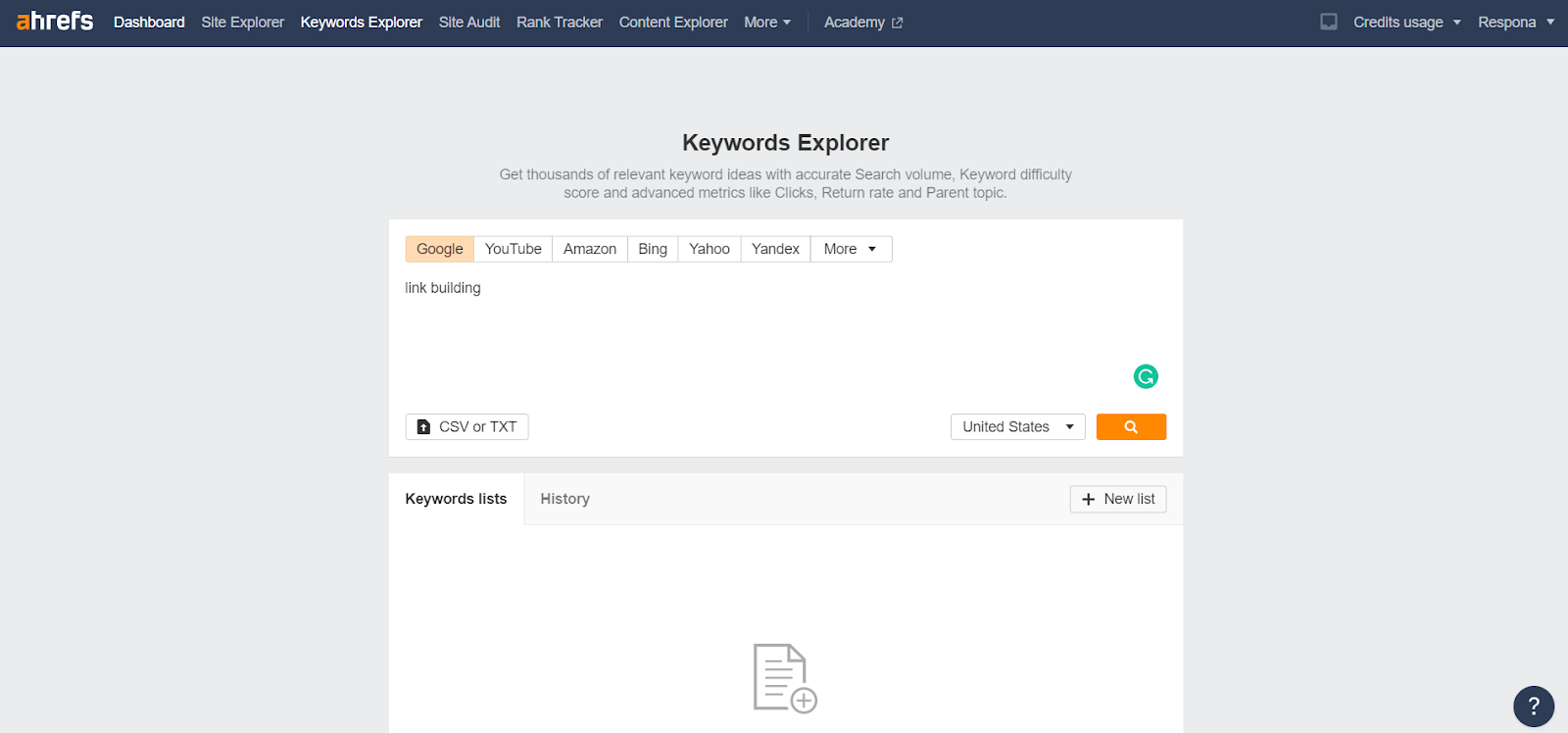
After you click “Search,” you’ll see a summary of your search with four metrics:
- KD (difficulty estimate, or how hard a keyword is to rank for)
- US search volume
- Traffic potential (the amount of traffic that the top-ranked page for that keyword receives)
- Total global searches
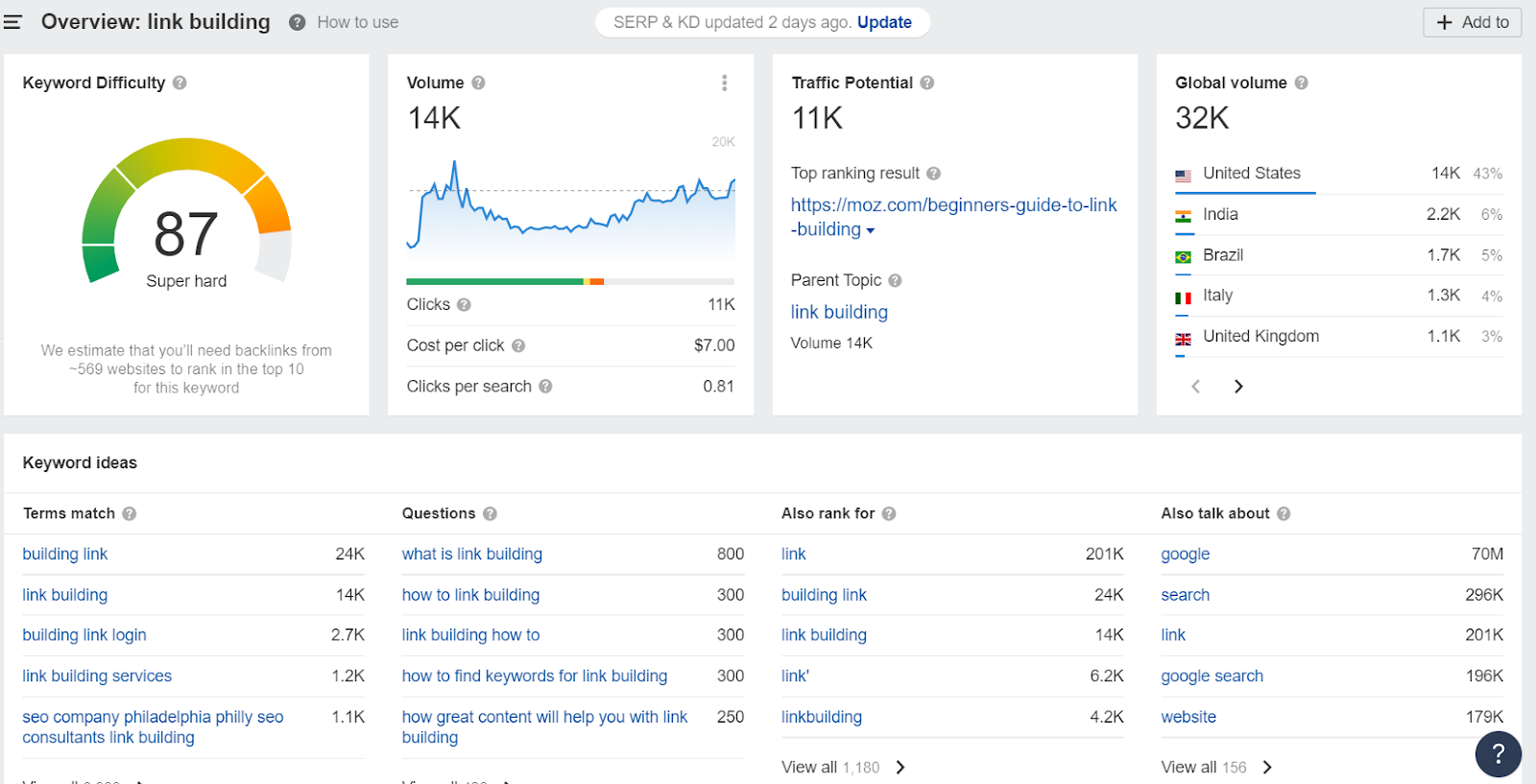
There will also be some keyword recommendations at the bottom, but you may obtain even more by clicking on “search suggestions” in the left sidebar.
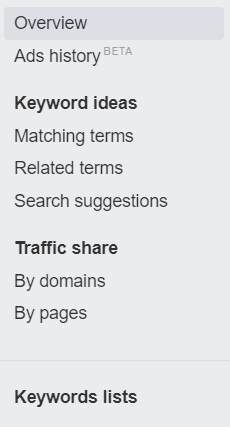
Ahrefs, for example, returns 185 keyword recommendations for “link building.”
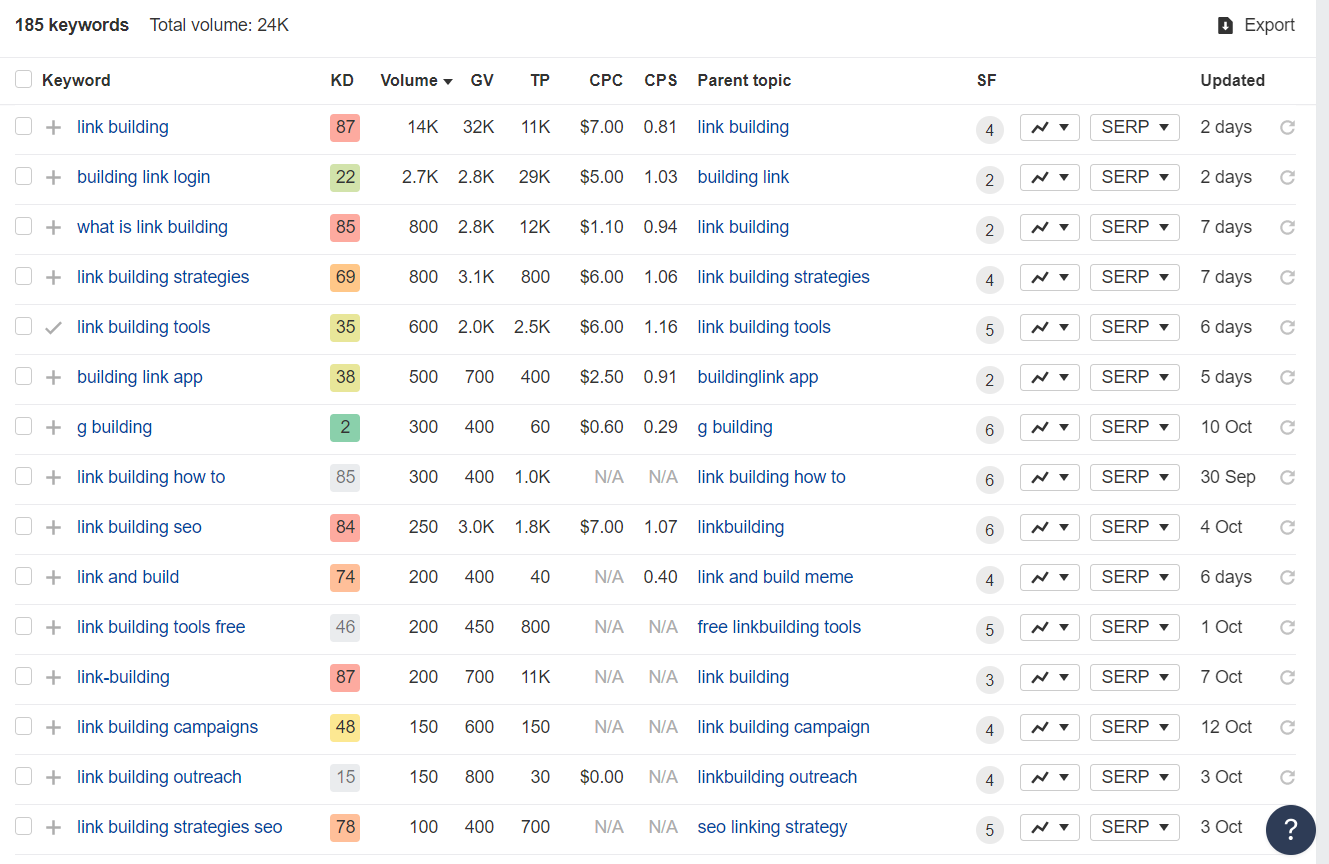
But how can you know which keywords to target with so many to pick from?
Your ideal keywords are those with a low difficulty score but a high traffic volume.
You can select keywords manually, but it will take up a significant portion of your day and will entail a significant amount of guessing.
It is preferable to employ a systematic strategy to save time and more efficiently identify keywords.
Fortunately, a technique exists that allows you to swiftly identify great keyword chances.
This formula is as follows:
(1/difficulty) * traffic potential * (CPC+1) = Keyword Score
Once you’re left with only the prime keyword opportunities, it’s time to set up a content calendar.
Content Calendar
A content calendar is simply a document (written or electronic) that outlines the order in which you will be creating content for the next month, quarter, or year.

It’s not strictly necessary to have one, but it does help organize your content creation process instead of randomly picking keywords every time it’s time to write a new article.
Quality Over Quantity
It may be tempting to write as many blog posts as possible to close as many keyword gaps as you can in the shortest amount of time, but it’s not necessarily a healthy idea for your content marketing strategy.
People know poor content when they see it, so it’s better to slow down and produce actually good pieces according to your capacity rather than blast out boring and straight-up bad content simply for closing the keyword gaps.
If people aren’t going to read them, they won’t rank for your chosen keywords anyways, being a strain on your content team, and essentially a waste of time and resources.
Establish Thought Leadership In Your Niche
Now, let’s get to the actual content part of content marketing, and how to build thought leadership with it.
Find Your Area of Expertise
The first step is to pick one area of expertise that aligns with the purpose of your SaaS.
It’s going to be the main topic that you’ll be producing content for.
For us, it’s link building.
More specifically, how to build high-quality backlinks through blogger outreach with the help of Respona.
For a tool like MarketMuse, for example, it would be content creation and optimization, and for Ahrefs, it’s SEO in general.
You will be branching your content out into other relevant topics as well, but figuring out your main area of expertise and capitalizing on it is going to be your bread and butter.
Find Your SaaS Brand Voice
Your audience most likely does not know you in person.
They only know you by your SaaS product and the type of content you put out.
This is why it’s important to find your brand voice and align your content with it.
To figure out your brand voice, start by thinking about the following questions:
- What are your brand’s values?
- What is your brand’s tone? Formal or casual?
- What is your brand’s personality?
Let’s take a look at Backlinko as an example.
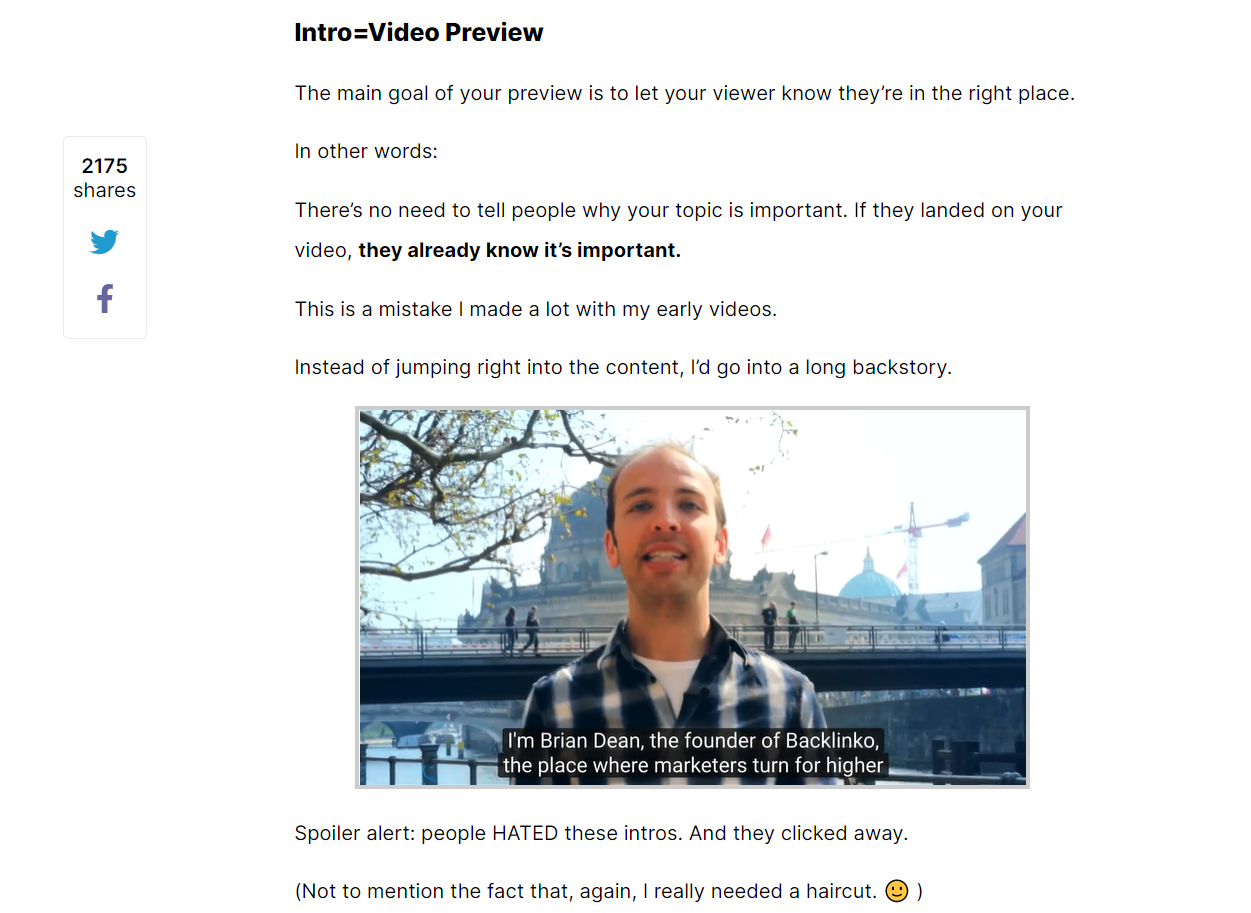
Brian Dean has a very recognizable way of content writing.
Despite his articles’ impressive length, most of it is visual: graphs, stats, and even video content.
And the text parts are written in a very conversational and digestible style, giving the content a strong (and likable) personality.
If you don’t know where to start, you can hire professional writers or a content agency to get you up and running with your first uploads, and if you feel like the tone aligns with your brand, maintain it with your own internal content team in the future.
Collaborate with Influencers and Brands
It’s no secret that even with the best content in the world, it is rare for a new business (especially in a highly-competitive industry) to generate substantial amounts of traffic on its own.
This applies to older businesses without a large, loyal audience of their own as well.
Influencers allow you to take a shortcut from “no audience” to “some audience”, as long as you have the budget and it makes sense for them to work with you.
There are a few ways to find influencers and brands to collaborate with for your saas content marketing strategy.
The first one is by manually researching the social media landscape within your niche and finding the most popular accounts.
This, however, takes a bunch of time and may not get you the results you really expect.
You can also use a tool like BuzzSumo to have a more in-depth look at the best-performing content and influencers in your niche.

You can also reach out to companies or brands that you think would be a good fit for your product or service.
Some examples of collaborations between saas companies and influencers or brands could include co-branded content, joint webinars or events, cross-promotion, reviews, giveaways, and so on.
Feature Your Own Research
Most content on the web follows a similar formula: which is to look at the single top-pefroming article for that keyword, and try to emulate it in an attempt to achieve the same results.
And while competitor research is a vital part of producing quality content, most of the time, a simple copy isn’t enough.
You need to one-up your competitors to stand a chance of outranking them.
How do you do that?
One common strategy is called Skyscraper Content. Its premise lies in closely researching all competing content for your chosen topic, and writing something that exceeds it, or has one more floor.
Sometimes though, it may be very difficult to find an angle that your competitors haven’t already covered, especially in more competitive niches.
So, one of the best strategies to add something new to the topic is to conduct your own research and publish its results.
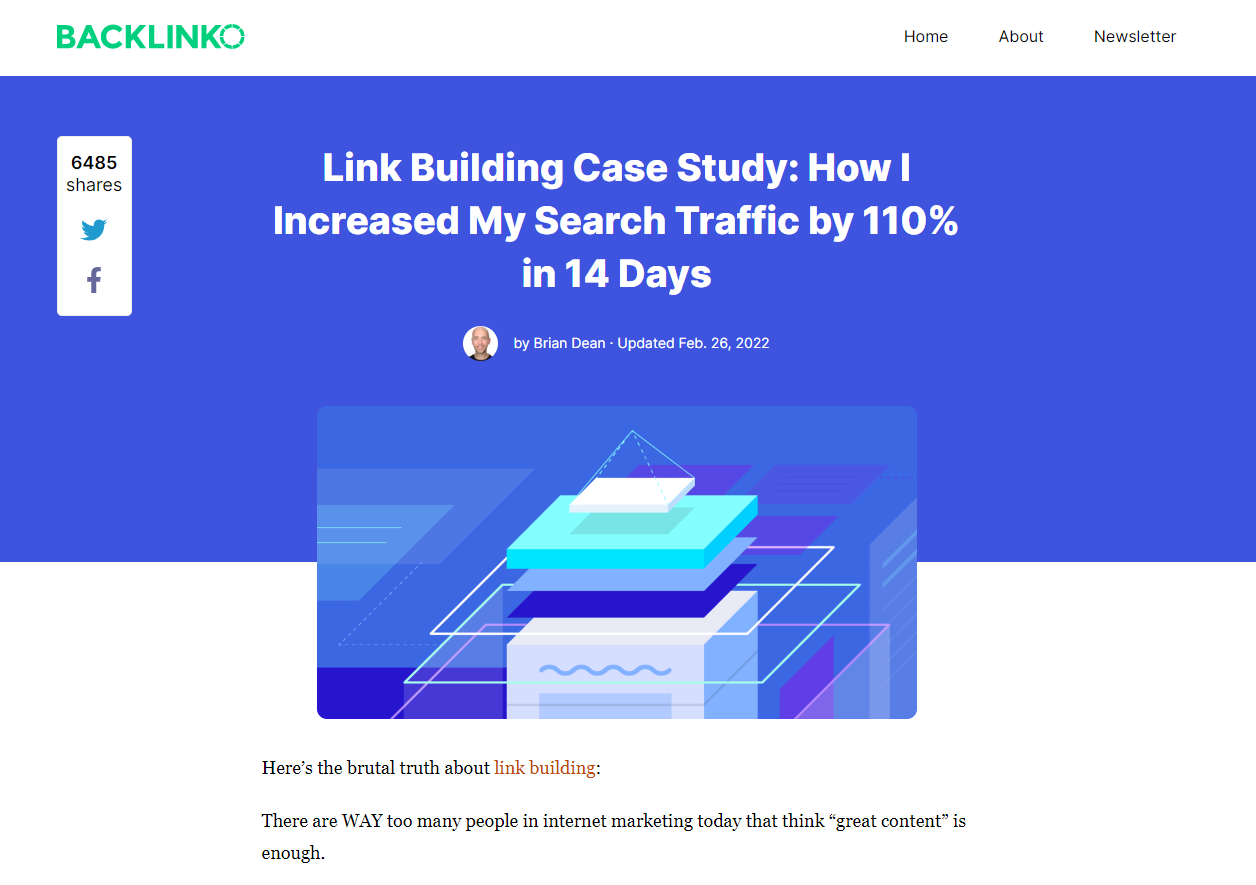
That said, conducting your own research and publishing it can be a daunting task.
However, once you break it down into smaller sub-tasks, it becomes much easier.
Here are a few tips to help you get started:
- Define your research question
This may seem like a no-brainer, but it’s important to have a clear idea of what you’re trying to learn before you start collecting data.
Otherwise, you may end up with a lot of information that doesn’t help you answer your question.
- Choose a method of data collection
There are many different ways to collect data, from surveys to interviews to observations. Choose the method that makes the most sense for your question and your audience.
- Collect and analyze your data
Once you have your data, it’s time to start making sense of it. Look for trends and patterns that can help you answer your research question.
Branch Out Your Core Topics
The area of your expertise is just the main topic of your blog – but it should never be the only one you ever cover, otherwise, you will run out of content ideas very quickly, and only be able to attract an extremely niche audience.
To diversify your content, you should establish 3-5 others, relevant topics that your audience is likely interested in, even if your software isn’t necessarily built for those tasks.
For us, the other core topics in support to link building are SEO, email outreach, and content marketing.
To identify your own additional core topics to cover, you can start by thinking what other processes your audience may need to learn more about.
Then you, can identify the exact keywords to produce content around, or use content research tools such as Semrush Topic Research to visualize the relationships between topics and have an easier time figuring out which ones make the most sense for your blog.
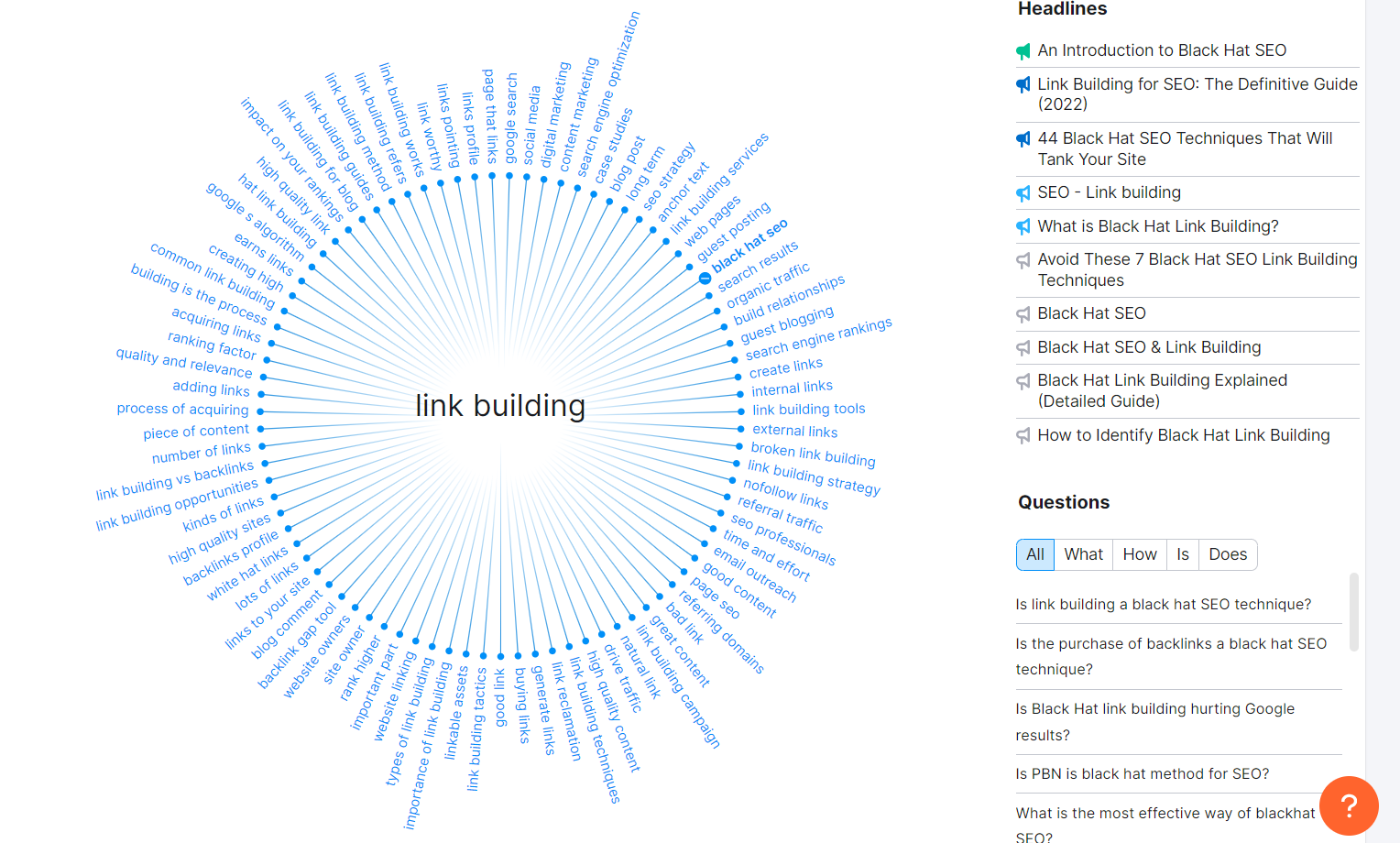
Create Content For Each Funnel Stage
There are four stages in a marketing funnel: awareness, interest, consideration, and conversion.
The intent behind a search in each stage of the marketing funnel is different – so the content needed to move your customer further must be different too.
Let’s take a look at each stage and its funnel content in more detail.
Awareness
The awareness stage of a marketing funnel is when potential customers become aware of a problem or need that your product or service can address.
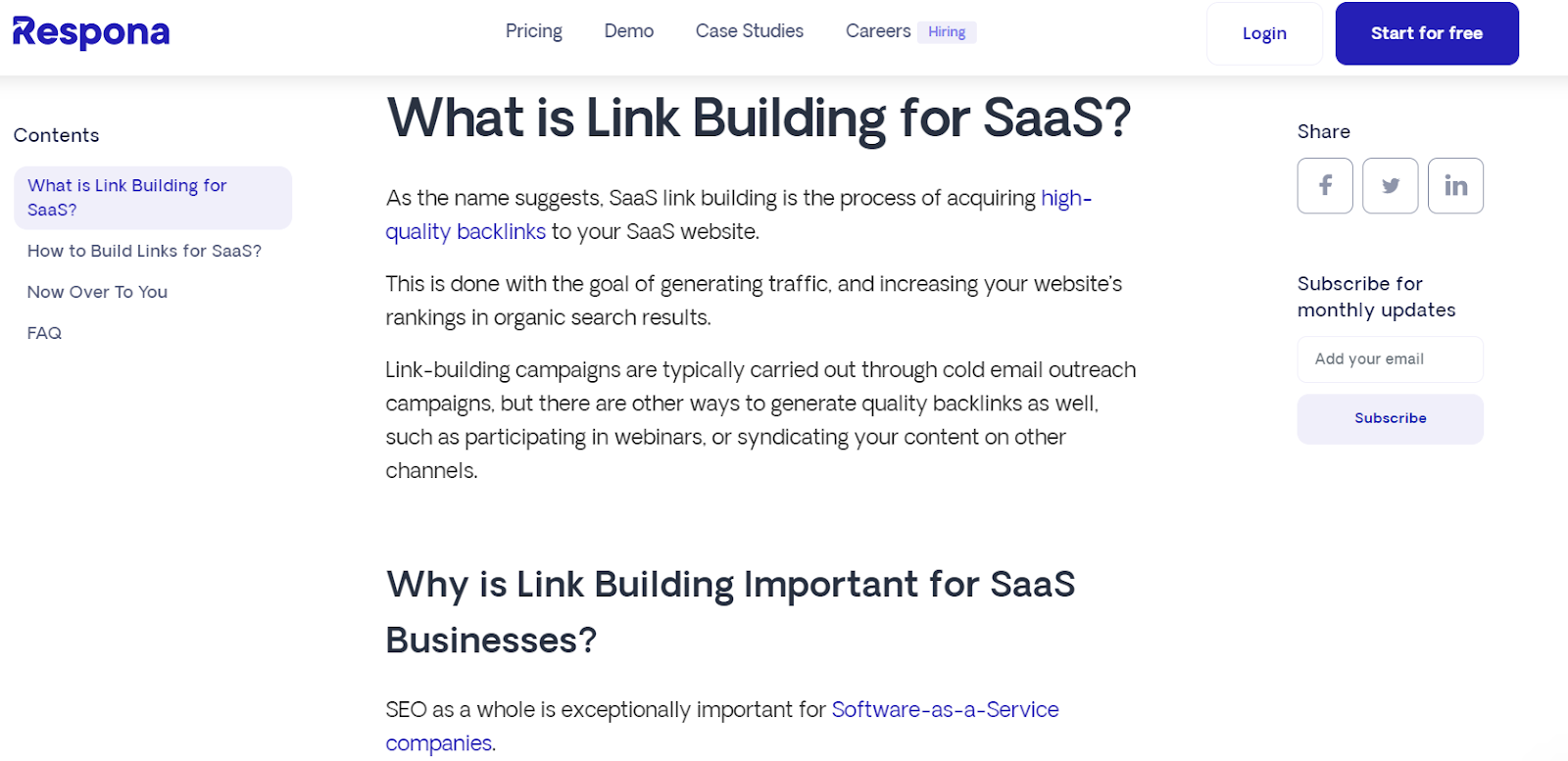
The perfect content for the awareness stage of your marketing funnel is educational, informative, and will help your audience understand their problem or need and how your product or service can help them solve it.
In other words, a blog post.
Interest
The interest stage of a marketing funnel is when a potential customer is (surprise-surprise) interested in your product or service.
They may have seen an ad, read an article, or heard about your product from a friend.
At this stage, they are considering whether or not your product is right for them.
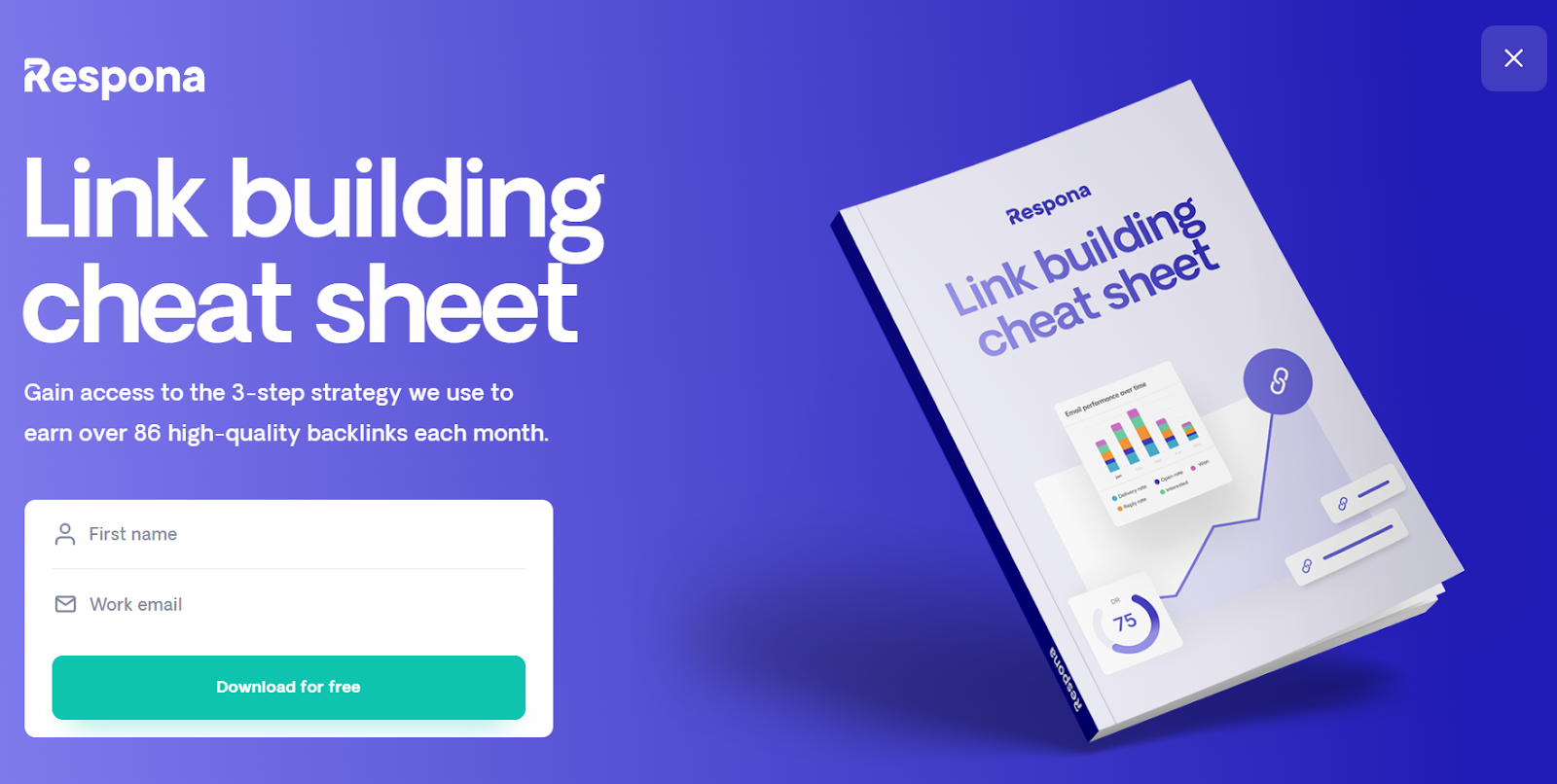
Some examples of content you could create for the interest stage of your saas content marketing strategy include:
- An eBook explaining what your product or service is and how it can help potential customers
- A blog post outlining the key features of your product or service
- An infographic showing potential customers how your product or service can help them
- A video tutorial walking potential customers through the key features of your product or service
Basically, your job is to educate the reader on why exactly your product/service is right for them, in detail.
Consideration
The consideration stage is when your prospects are evaluating their options and trying to decide which product or service is right for them.
They’re almost ready to buy – but need that little extra nudge in your direction, such as an in-depth overview of your pricing, or even a free trial so they can see your tool for themselves.
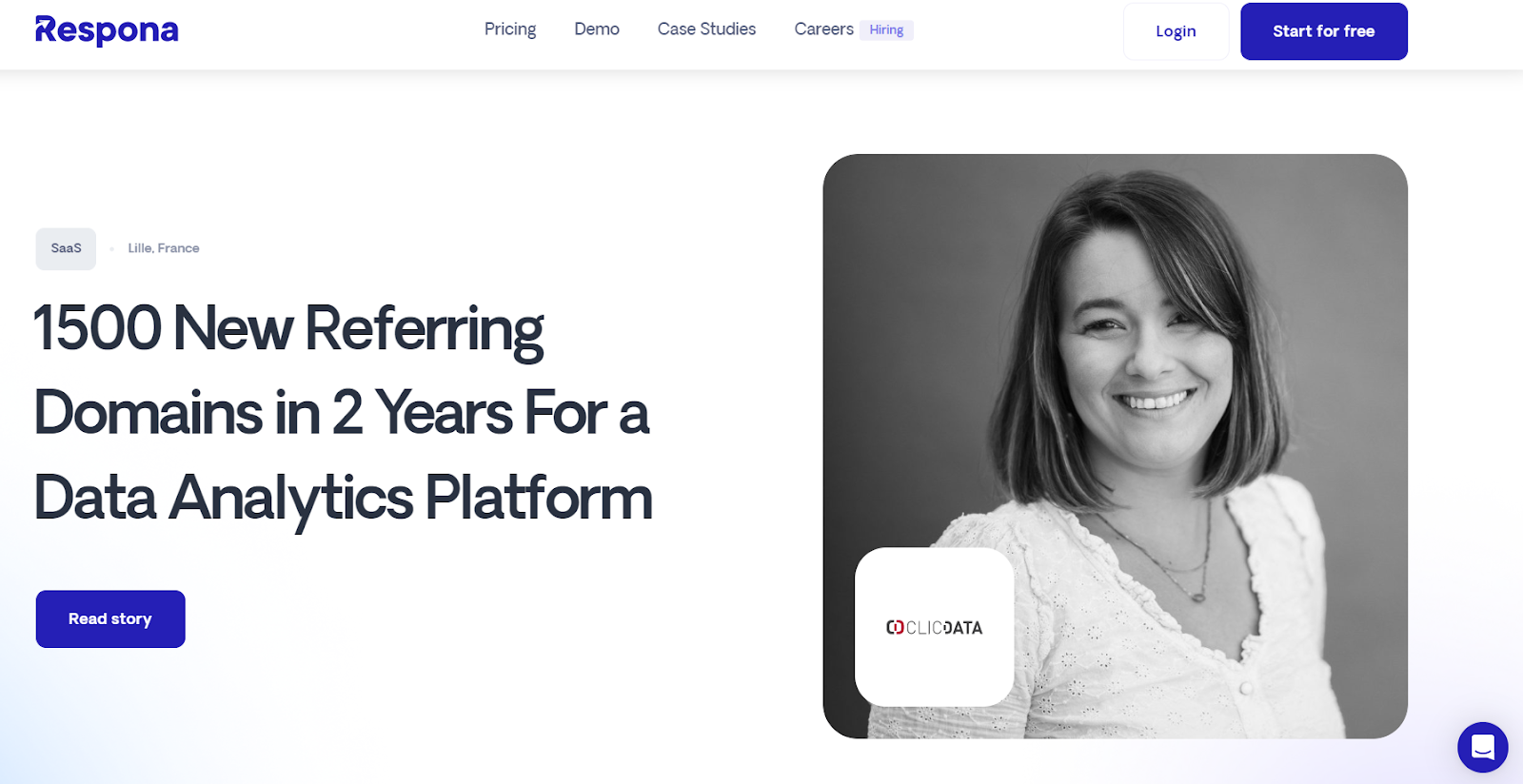
More examples of content for the consideration stage include:
- Product demos and video tours
- Explainer videos and articles
- Case studies and customer testimonials
- Comparison charts and infographics
Conversion
The conversion stage of a marketing funnel is when a visitor to your website takes a desired action, such as subscribing to your email marketing list, downloading a white paper, or making a purchase.
In our case, the goal is to get the user to buy your SaaS.
Examples of content that could be used at the conversion stage include landing pages, feature pages, exit intent pop-ups, email newsletters and so on.
Make sure to include a strong call-to-action (such as “Start Your 7-Day Free Trial Now!”), and persuasive language.
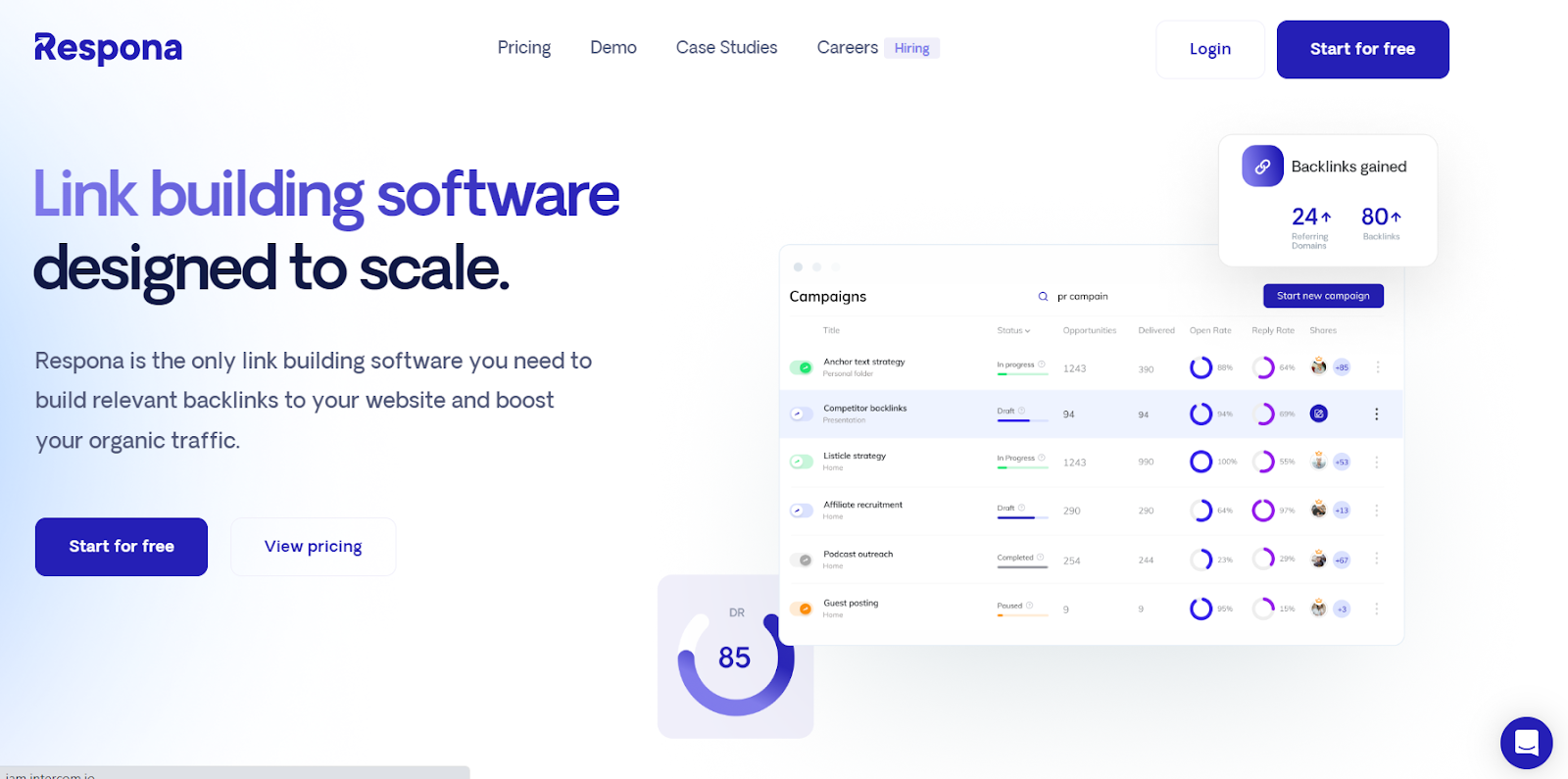
Use All Distribution Channels
There are three types of content distribution channels – owned, earned, and paid.
A robust SaaS content marketing strategy takes advantage of all three types of distribution channels.
Let’s take a closer look at the difference between each of them.
Owned
Owned media is any type of media that is under the control of the company.
These are channels that the company can use to directly distribute its content, such as your website, blog, or social media account.
The main advantage of owned media is that it allows the company to have complete control over the message and the audience.
Owned media is also easy to track – which isn’t necessarily the case with earned and owned channels.
However, owned media channels can be expensive to maintain and may require significant resources to generate quality content.
Earned
Earned media is defined as any publicity that your company or brand receives through word-of-mouth, organic means.
This could come in the form of online reviews, social media mentions, or news articles written about your business.
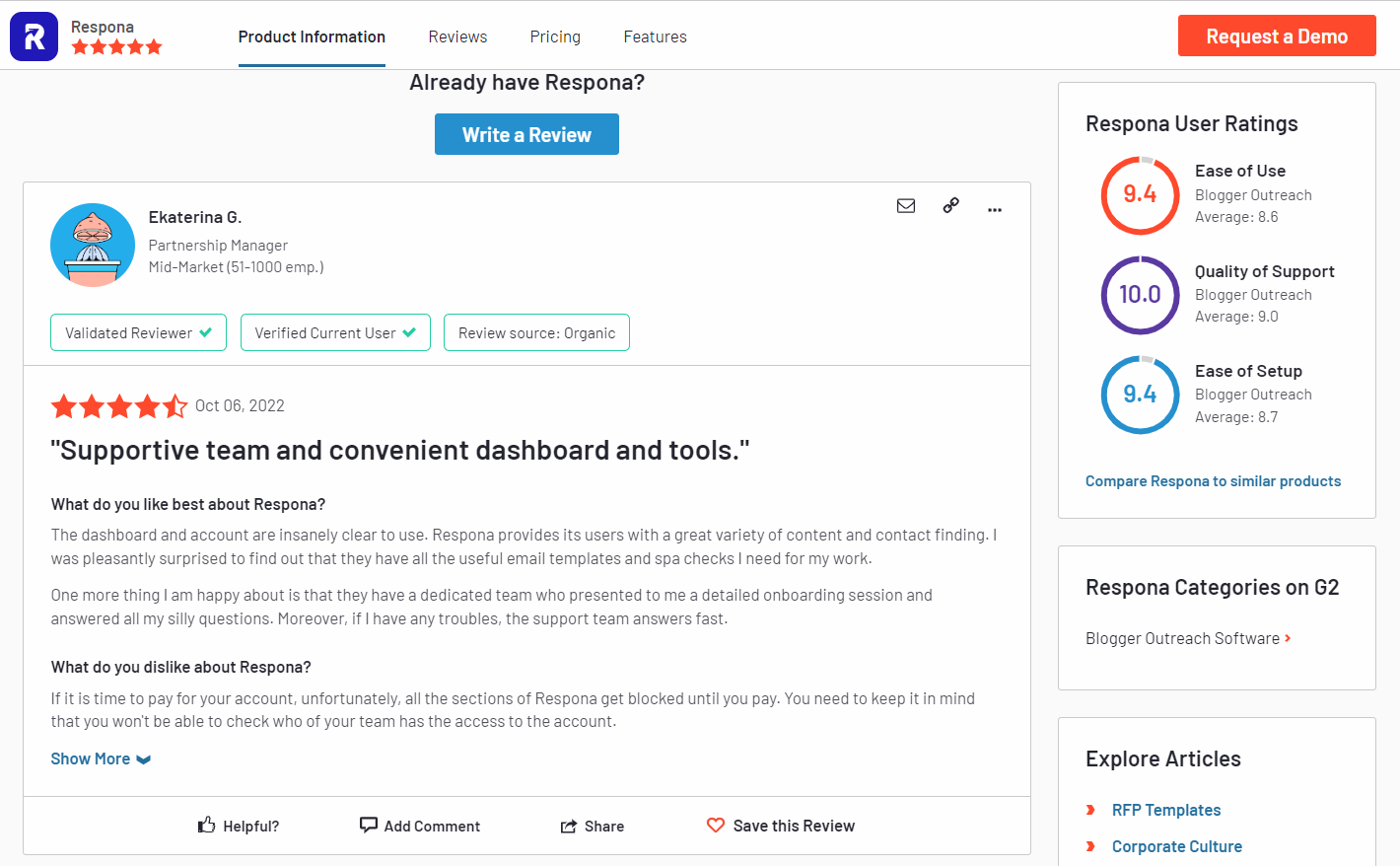
There are several advantages to earned media compared to owned and paid media.
First, earned media is more credible because it comes from a third-party source.
Second, it’s free.
Finally, earned media can reach a much wider audience since it’s not limited to your own resources.
With that said, you have little to zero control over earned media, and it can be negative as well as positive.
Paid
As you guessed, advertisements, sponsorships, promotional content, and anything else that you pay for are considered paid media.
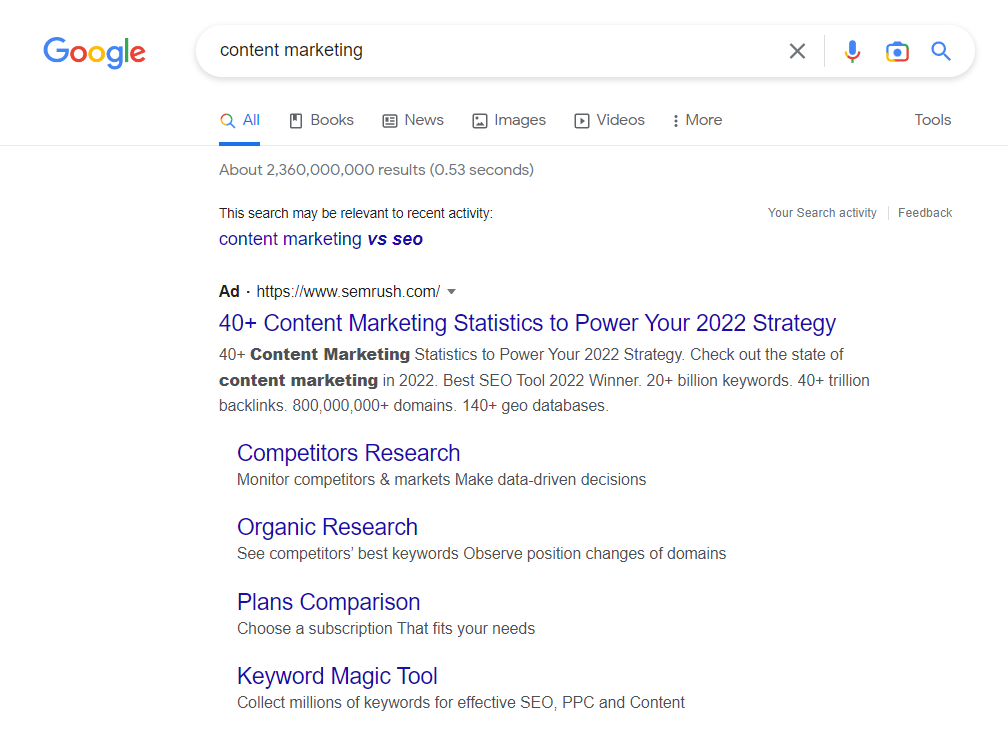
It allows you to reach a larger audience more quickly and easily than either of the other two types of media.
You can also fine-tune your ad targeting, ensuring only the right people will see your message, making it more flexible and sometimes more effective.
That is, of course, if you have the budget and know what you’re doing with it – running advertising campaigns isn’t exactly a walk in the park.
You also have to keep in mind that a lot of people are naturally skeptical of any content that has a giant “AD” label on it.
Promote Content
No promotion = no exposure unless you already have a large and engaged audience that’s dying to read your next post.
Most SaaS companies don’t.
So after your post is published, if you want it to generate traffic, it’s wise to invest in at least one content promotion strategy.
Social Media
Just sharing your blog posts in your social media groups is the absolute bare minimum of social media content promotion that you can do.
- Create a social media graphic for your blog post
Design a custom social media graphic for your blog post and share it on your company’s social media channels. This will help your blog post stand out and may entice more people to click through to read it.
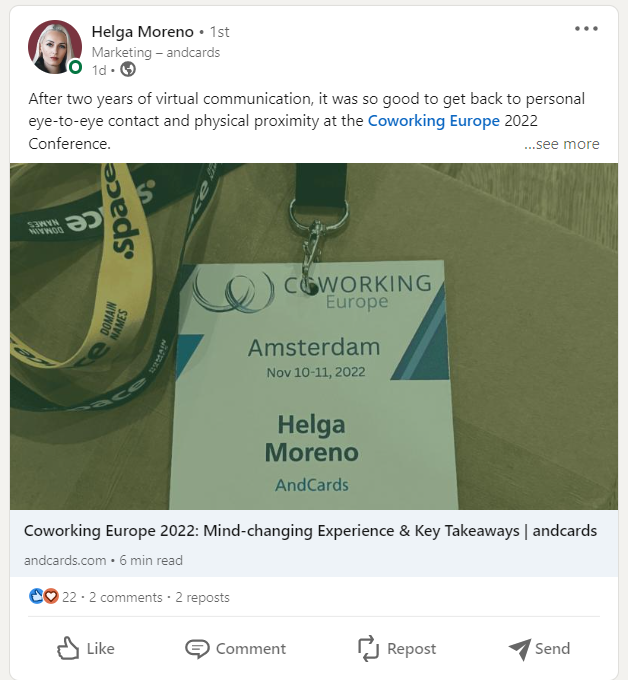
- Write a short teaser for your blog post in your social media posts
In addition to sharing a link to your blog post, write a short teaser for it in your social media posts. This will give people a taste of what your blog post is about and may encourage them to read it.

- Share your blog post in relevant online communities
If there are any relevant online communities (e.g. forums, Facebook groups, etc.) that your target audience hangs out in, share your blog post there. Just be sure to read the rules of the community first so that you don’t get banned for self-promotion.
One of the most popular ways to promote your content through email is by offering a newsletter.
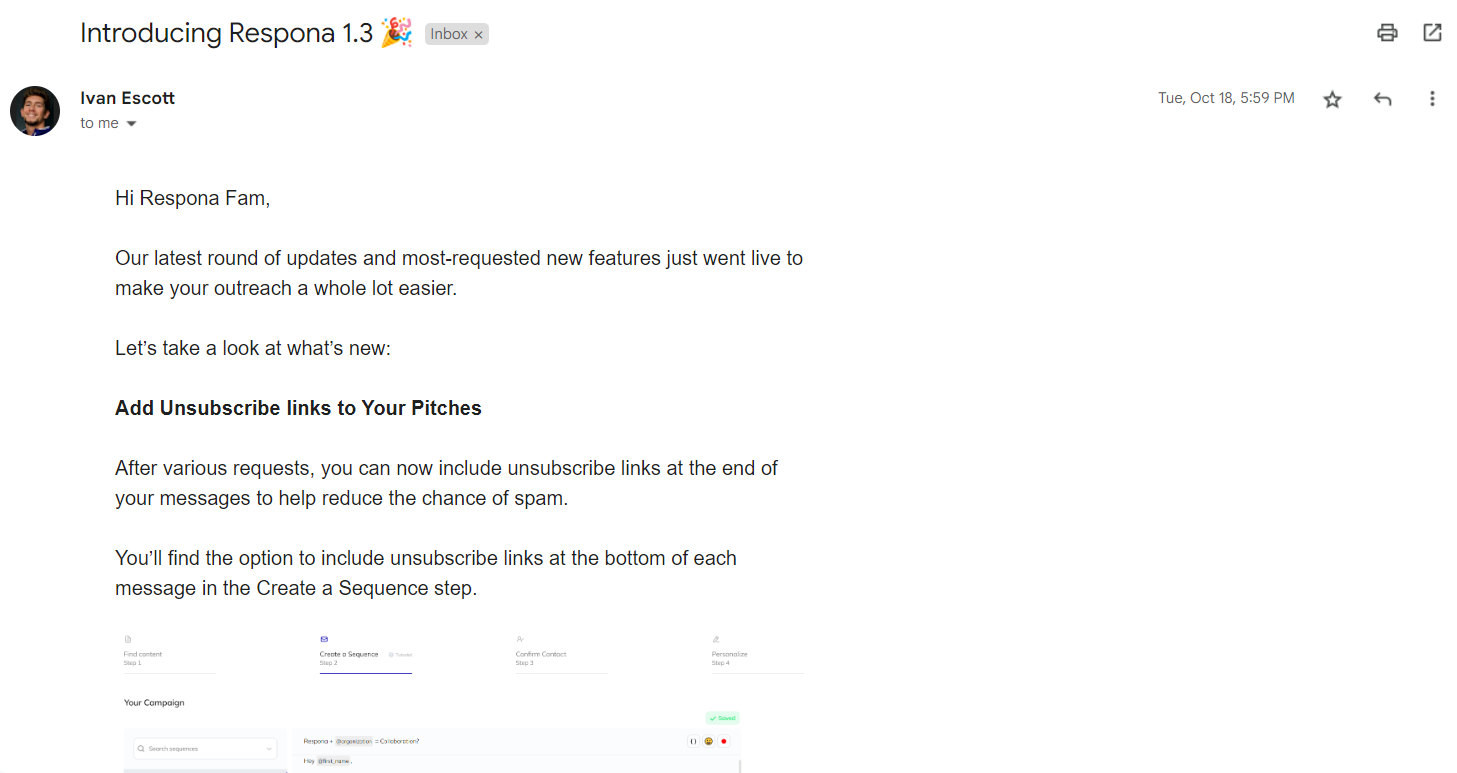
Just make sure to use a double opt-in process to ensure that you send your content only to the people that actually want to see it.
- Make a strong offer
Email content promotion is all about giving your subscribers something that they want. Whether it’s a discount, exclusive content, or early access to a new product, make sure that your offer is something that will entice them to open your email.
- Keep it short and sweet
No one will read a long, drawn-out email. Keep your promotion email short and to the point, and make sure that the offer is clearly stated upfront.
- Use strong visuals
A picture is worth a thousand words, so make sure that your email content promotion email is visually appealing. Use strong visuals to grab attention and make your offer stand out. If necessary, use tools to unblur images and enhance their quality for better looks.
- Use an enticing subject line
Your subject line is the first thing that your subscribers will see, so make sure that it’s something that will make them want to open your email. Be creative, and test out different subject lines to see what works best.
- Timing
Avoid sending late at night or early in the morning, and target days and times when your subscribers are most likely to be online.
- Personalize your email
Personalized emails perform better than generic ones, so make sure to include your subscriber’s name and other personal details in your email content promotion email.
This will make them feel like you’re speaking directly to them, and it will increase the chances that they’ll take action on your offer.
- Test, test, test
Always test your email content promotion email before you send it out to your entire list. Send it to a small group of people first, and see how they respond. Make sure to track your open and click-through rates so that you don’t waste time on something nobody opens.
Link Building
Link building is the process of acquiring links from other websites to your own.
A strong backlink profile is one of the most important ranking factors for search engines, as it is a clear indication of the popularity and authority of a website.
In other words, the more high-quality links a website has pointing to it, the higher it is likely to rank in search engine results pages.
The three most popular (and effective) link building strategies are:
- Anchor text strategy
- Competitor backlinks
- Guest posting
Respona was primarily developed to help businesses streamline their link building process and cut down on the time and effort required to run link building outreach.
Let’s quickly run through a typical competitor backlinks campaign with Respona.
It involves 4 steps – prospecting, creating an email sequence, finding contact details, and personalizing pitches.
Step 1 – Prospecting
The prospecting stage is the process of finding opportunities to reach out to.
In the case of competitor backlinks, these are going to be blog posts that are currently linking to your competing content.
This is one of our favorite link building strategies because you’re able to generate hundreds of high-quality prospects within just a few minutes.
One of the best tools for this is Ahrefs.
In fact, Respona integrates with Ahrefs directly, so you can pull your competitors’ backlinks directly into your outreach campaigns.
Simply create a new campaign and paste the URLs of competing articles into our backlink search automation.
Yes – it can run multiple queries at the same time.
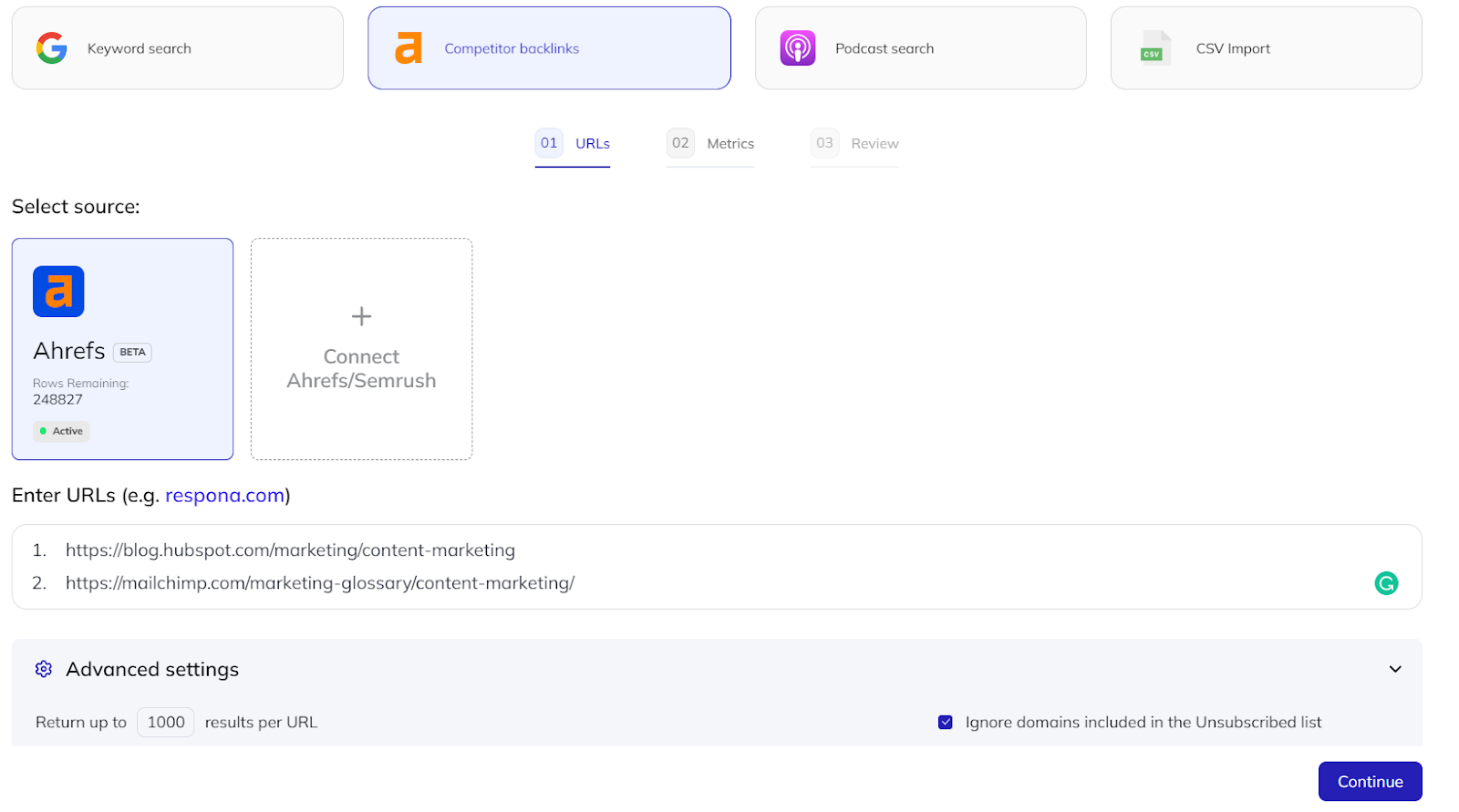
After you hit “Continue”, you will also be able to set desired SEO criteria to make sure you’re only getting high-quality prospects.
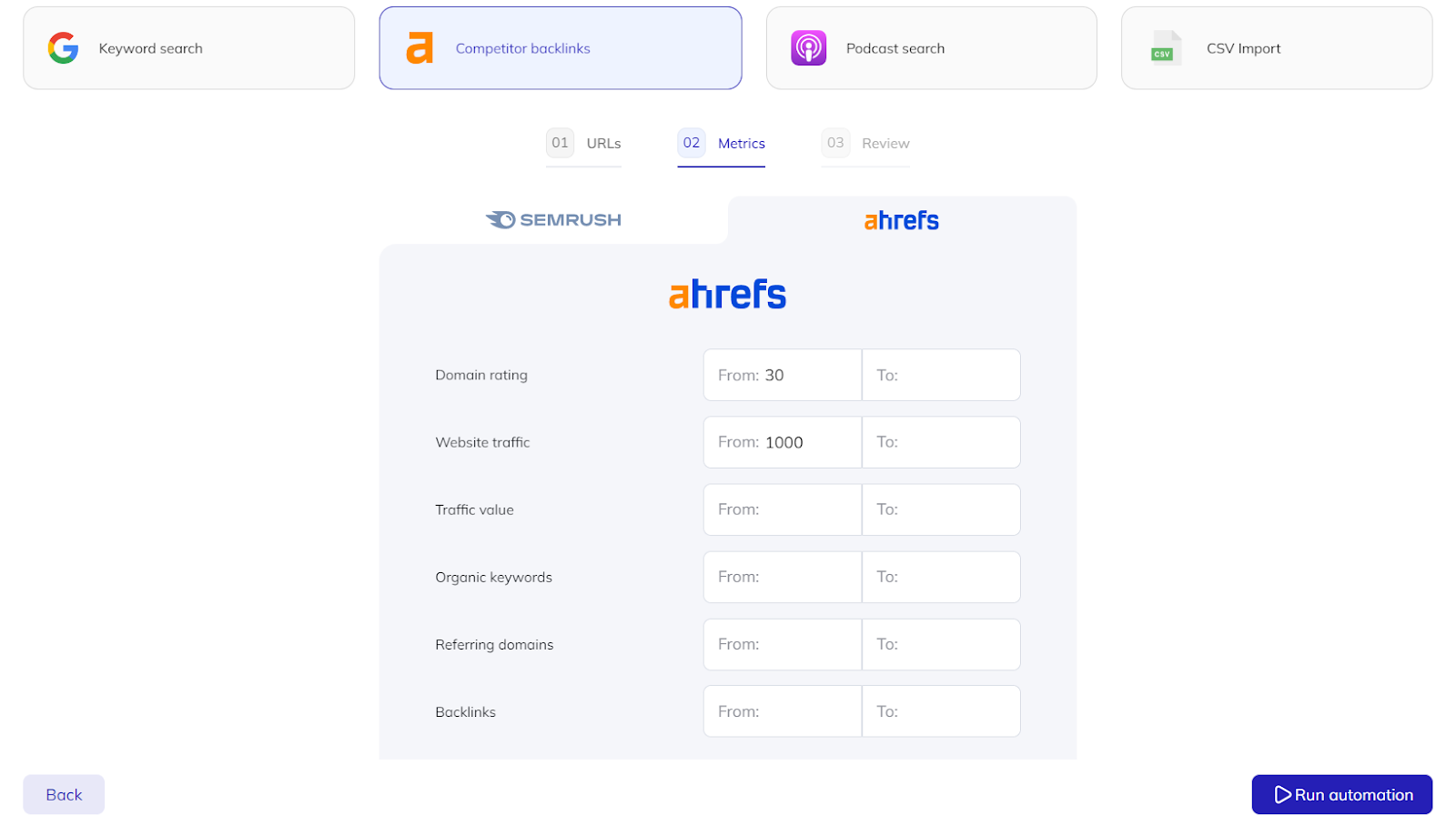
Running the automation will automatically pull all backlinks that meet your SEO criteria directly into your Respona campaign – no need to export/import a .CSV sheet.
Step 2 – Email Sequence
The email sequence are the templates that will be sent to each prospect in your campaign after personalizing.
Respona comes with a number of pre-built email sequence templates, and, of course, the option to create and save your own.
Here is a sequence that we found to work pretty well for competitor backlinks.
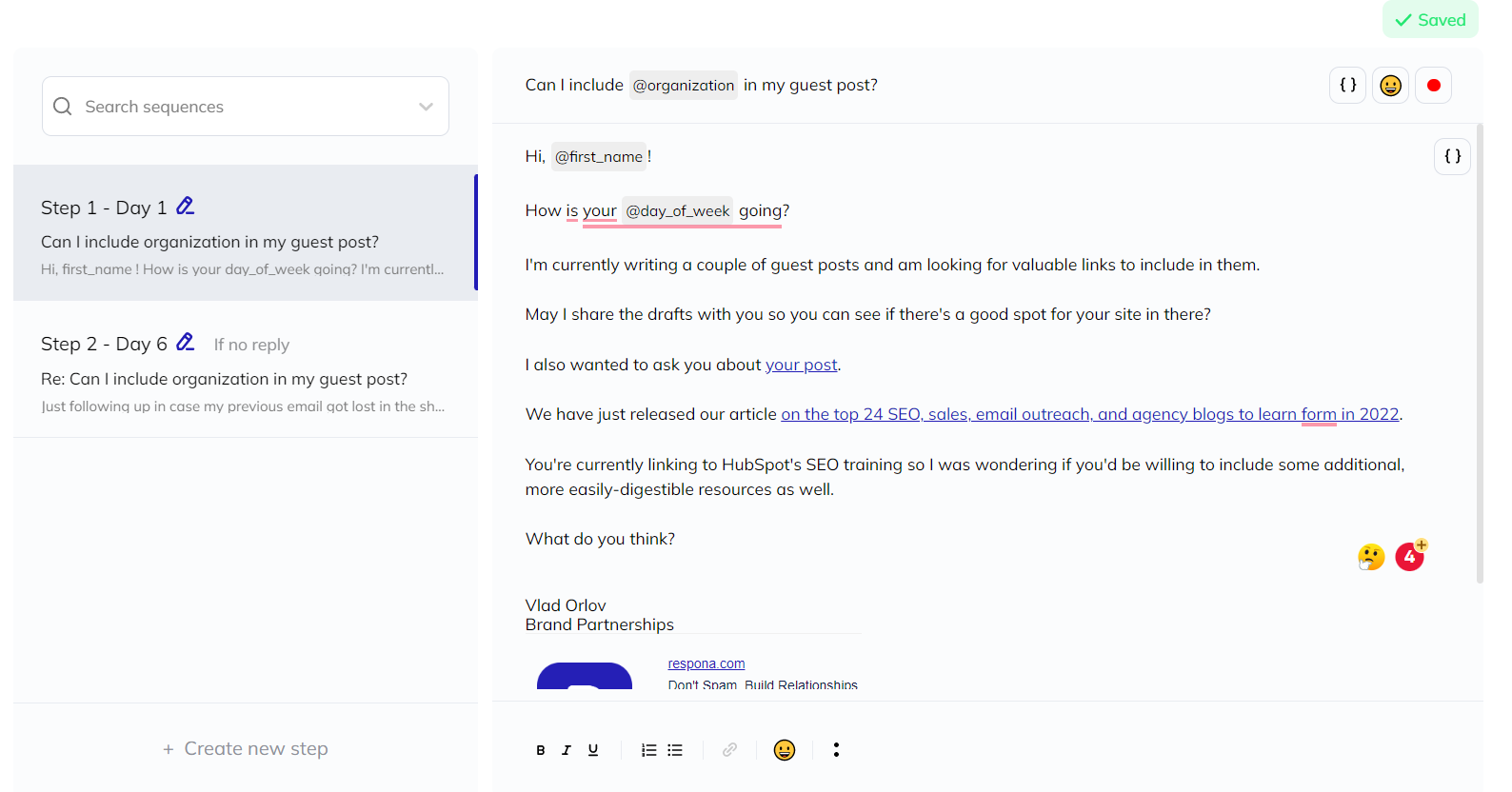
Note the variables like @first_name and @day_of_week – these will be automatically populated at the personalization stage.
We also don’t recommend sending more than a single follow-up for link building campaigns, to avoid coming across as spammy.
Step 3 – Finding and Confirming Contacts
Respona taps into 24 different data providers to find and verify contact information for your prospects in real-time. It can also pull multiple people per opportunity.
All you have to do is tell the tool the positions of your desired team members as well as their seniority level.
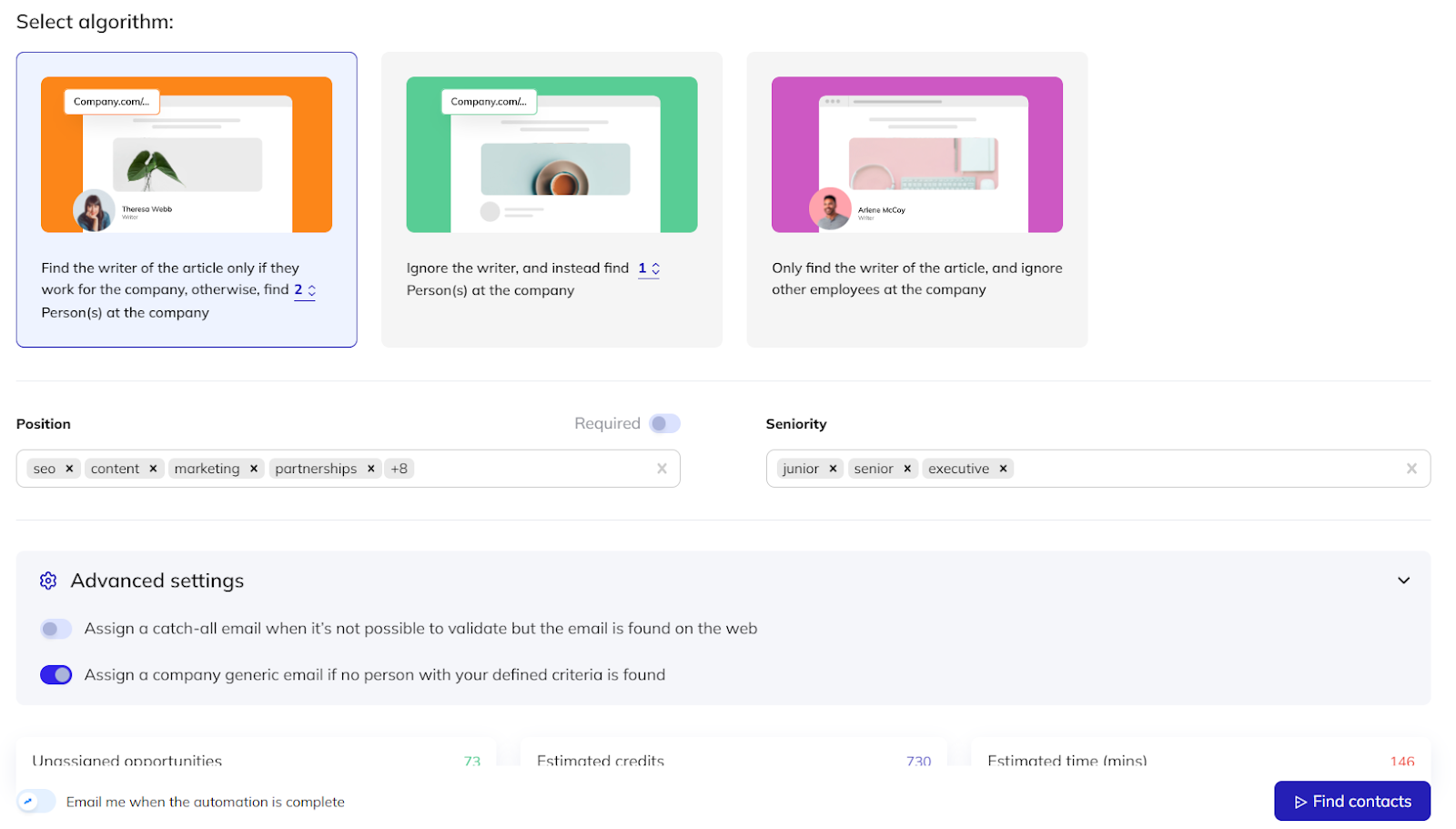
Finding contacts may take a few minutes depending on the size of your campaign.
Once it’s done, you can review the automation results, or even run additional manual searches to assign additional contact information.
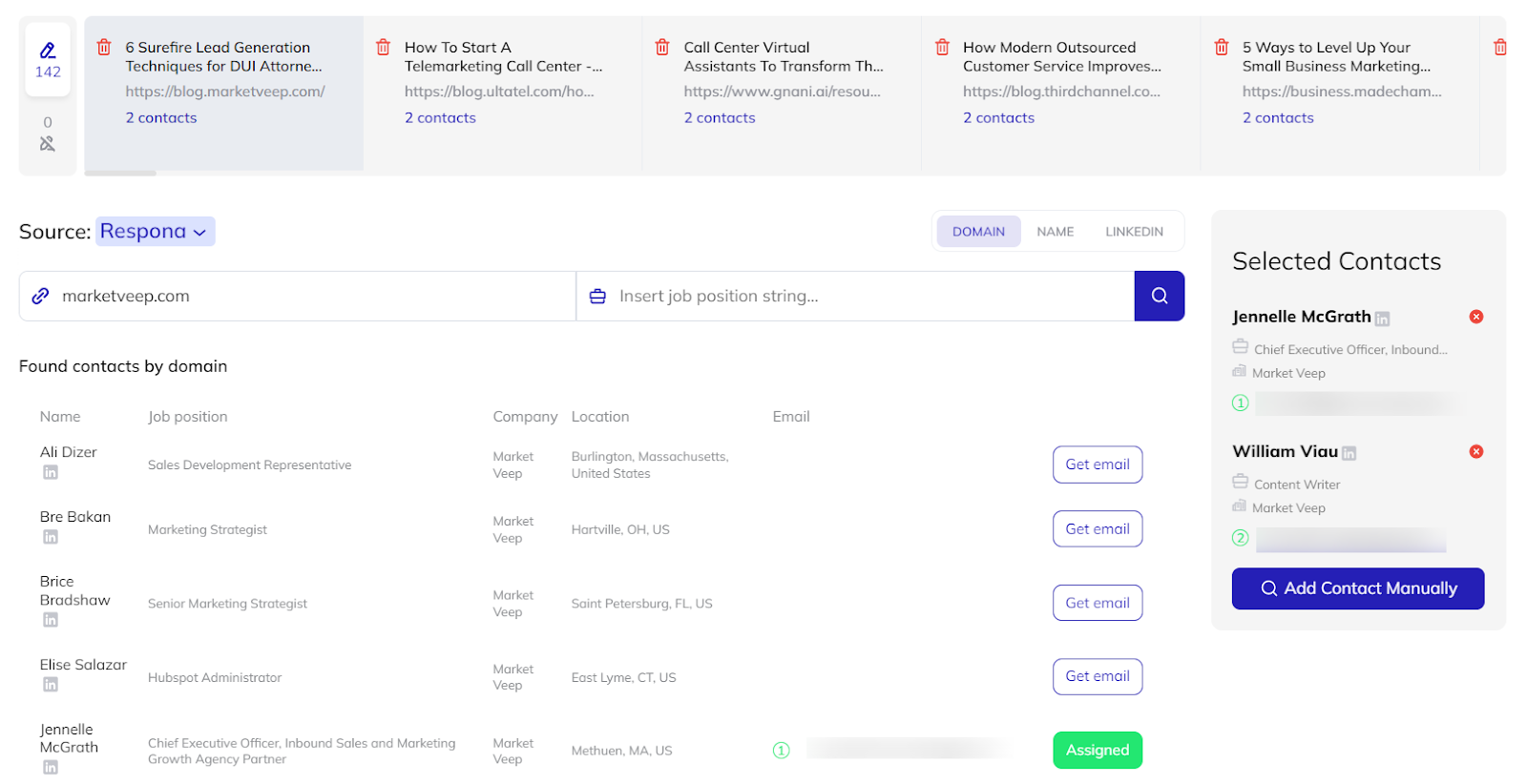
Step 4 – Personalization
Once you’ve reviewed your contact automation results, the final step is to personalize your pitches before launching.
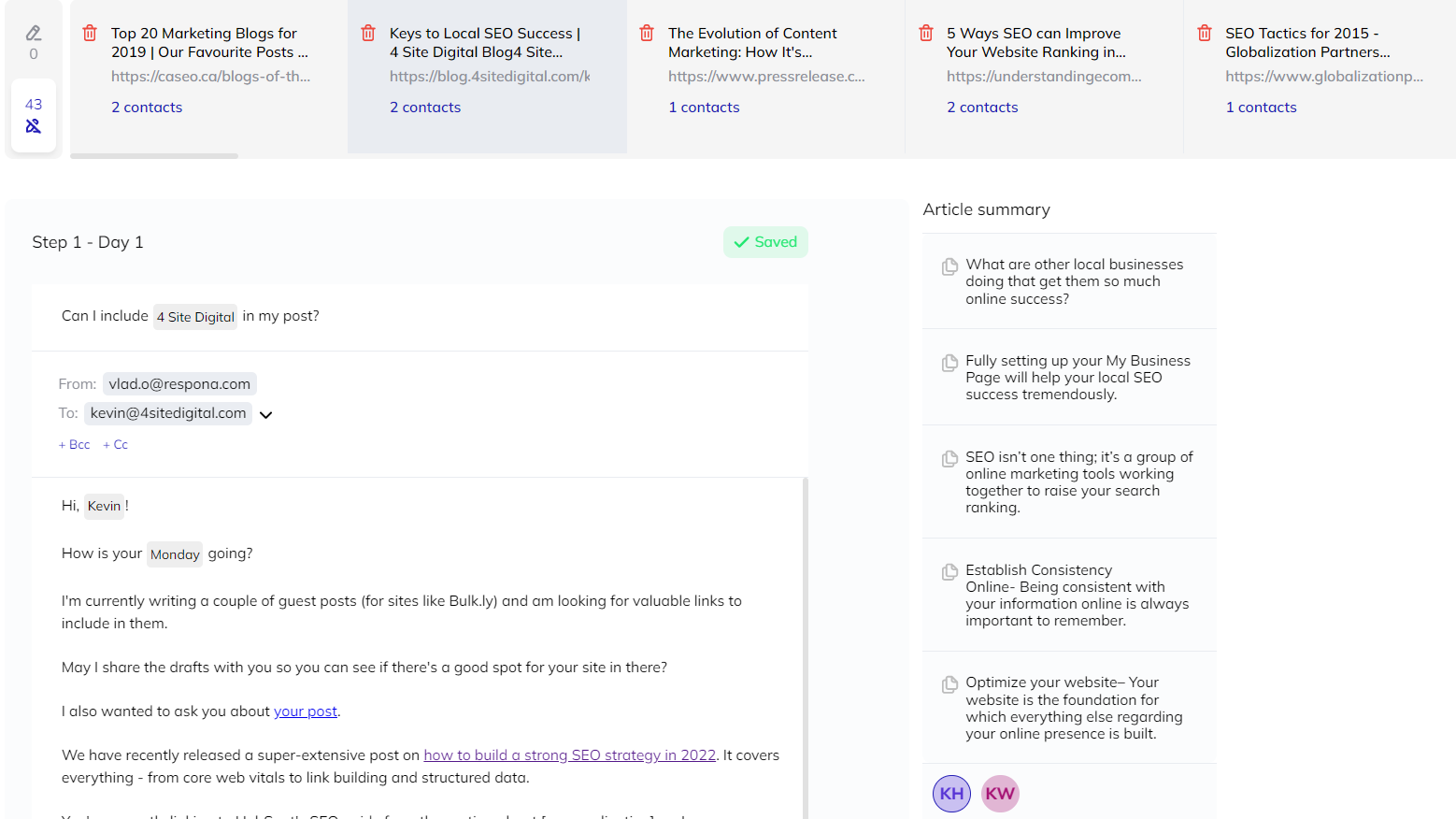
All variables added at step 2 will be automatically populated.
However, you should go the extra step to increase your chances of getting a result.
This extra step could be mentioning something your prospect talks about in their article.
Respona actually uses an AI to pull 5 summaries per article right from their content, so you don’t even have to open the blog post to search for things to mention.
Once all pitches are personalized, Respona will also run the emails through a set of pre-launch checks to make sure you don’t have any duplicate opportunities, aren’t trying to reach out to anyone that you have recently contacted, all the variables are filled in correctly, and no placeholders are present in any of your pitches.
Paid Advertising
There are a number of ways to promote your existing content through paid advertising. One way is to use Google Ads.
With Ads, you can create ad groups that target specific keywords.
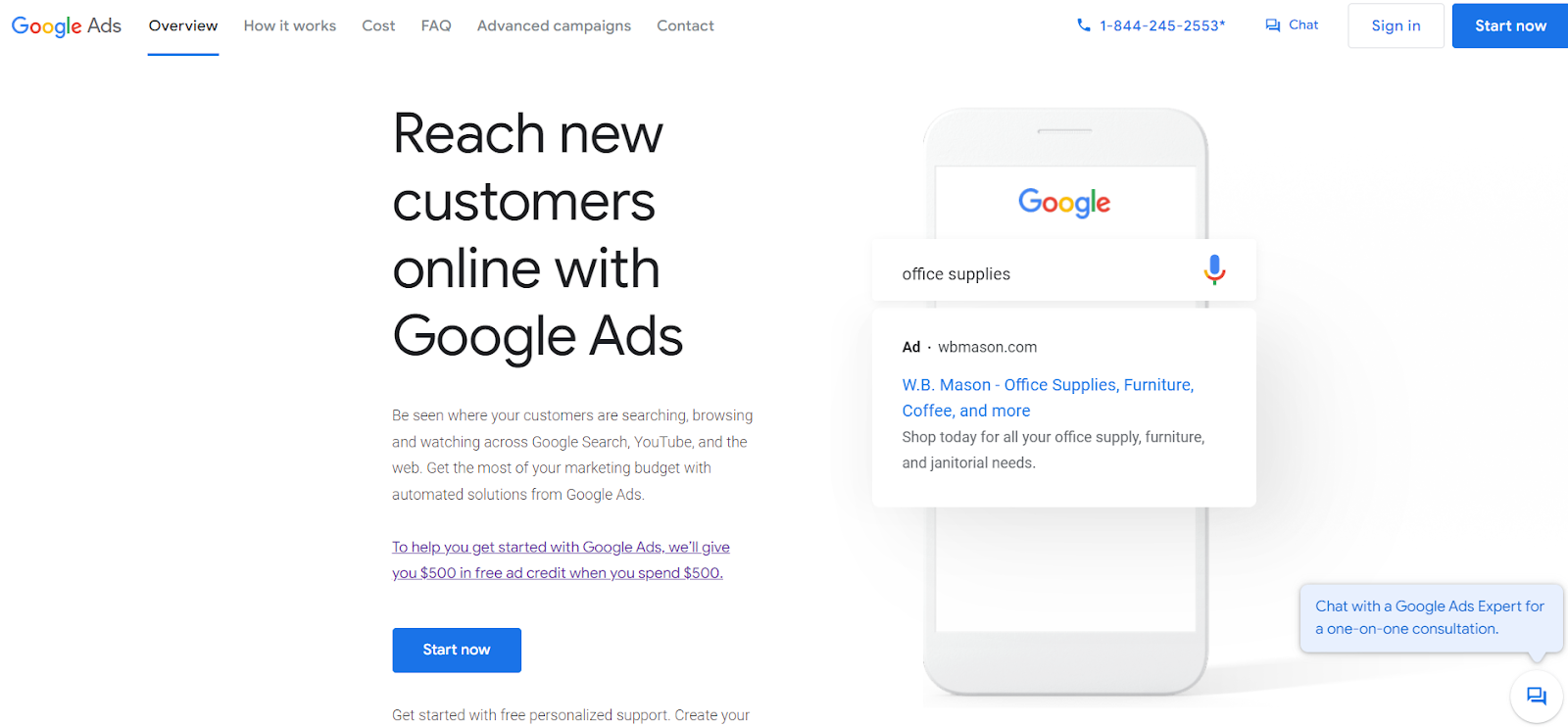
When someone searches for one of those keywords, your ad will appear on top of the search results, as long as you’re the highest bidder.
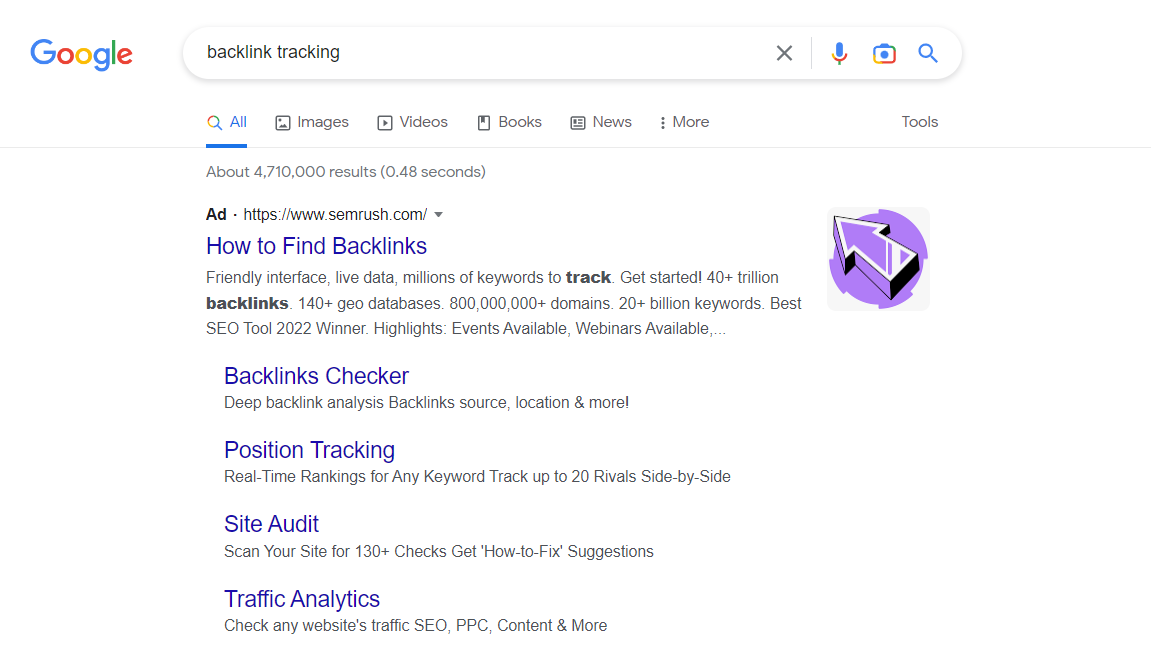
Update, Syndicate, Republish
Even after several cycles of promotion, the life of your content doesn’t really end.
Chances are, in the future, you will be writing another post that touches on the same topic, but from a slightly different angle.
Instead of writing up a completely new content piece, you can take advantage of what’s already published, recycle and syndicate it.
As long as it’s not a straight-up copy and paste of the previous article and it makes sense in context of the new topic, you shouldn’t run into any duplicate content issues.
One of the best strategies for syndication and recycling is taking a huge blog post and breaking it down into several short but easily digestible YouTube videos.
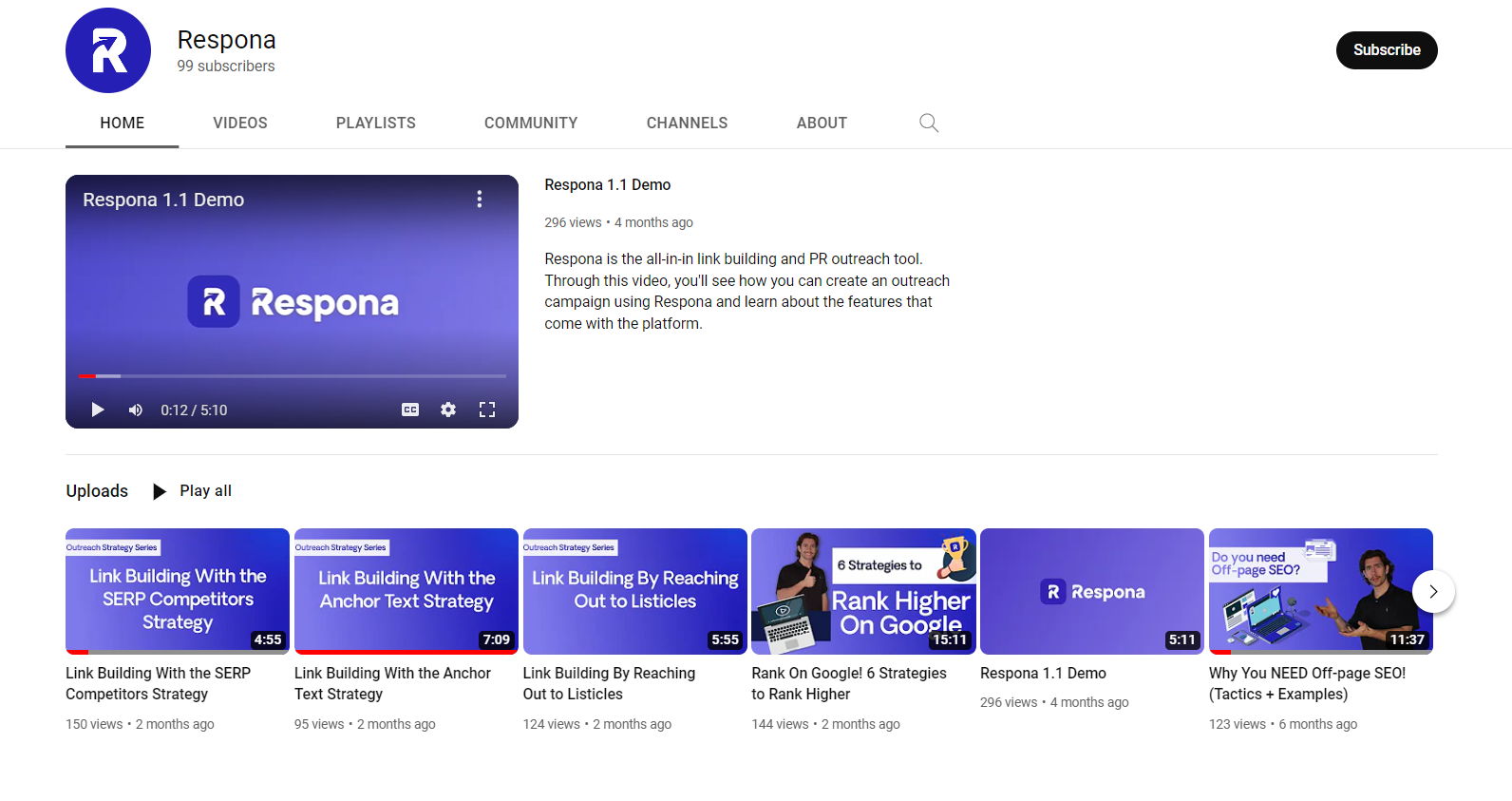
This kills two birds with one stone, essentially granting you a free script for your video and providing your audience with a more engaging, visual form of content.
The human attention span is only a few minutes, so reading through a 10,000-word monster is difficult even for the most focused and determined of people.
Link building cheat sheet
Now Over To You
To sum it up, a solid SaaS content marketing strategy:
- Is tailored to your specific audience’s needs
- Targets a variety of relevant keywords and core topics
- Requires a dedicated content team consistently producing high-quality blog posts, social media posts, and other forms of content
- Takes advantage of existing content, repurposes, and syndicates it
- Uses owned, earned, and paid content distribution channels
- Promotes content after its publication
- Ensures top-notch search engine optimization of your website and the content you publish
All of this is, of course, a lot of work.
As a link building software, we can help ease the link building process for you, which is also one of the lengthiest and resource-intensive SEO initiatives you can undertake.
Start your 7-day free trial now to learn how we can help.
FAQ
What are the benefits of B2B content marketing for SaaS companies?
Perhaps most importantly, it can help to attract and convert leads into customers.
By creating compelling and targeted content, SaaS companies can reach out to their target market and build trust and credibility with potential buyers.
In addition to generating leads, your content marketing effort can also help to nurture relationships with existing customers and keep them engaged with your brand.
By providing valuable and informative content, you can keep your customers happy and help to reduce churn.
Finally, content marketing can also be used to boost SEO efforts and drive traffic to your website.
What are the top KPIs for measuring your SaaS content marketing campaigns?
There are a number of KPIs that can be used to measure the success of SaaS content marketing campaigns. Some of the most important KPIs include:
- Engagement rate
- Reach
- Click-through rate
- Conversion rate
- Cost per acquisition
- Lifetime value
- Net promoter score
This measures how likely your customers are to recommend your company to others.
What are the most common SaaS content marketing mistakes?
There are many potential SaaS content marketing mistakes, but some of the most common ones are:
- Not Defining Your Target Audience
- Not Having a Clear Purpose
- Not Investing in Quality
- Not Promoting Your Content
What are the best places to learn SaaS content marketing?
Some of the best places online are the Semrush and Ahrefs blogs, as well as the Search Engine Journal.
Are content marketing and SEO the same thing?
No, content marketing and SEO are not the same thing.
Content marketing is the creation and distribution of valuable, relevant, and consistent content to attract and retain a clearly defined audience — with the goal of driving profitable customer action.
SEO, on the other hand, is the process of optimizing a website for Google search with the goal of earning higher web traffic levels and improving the visibility of the site.






